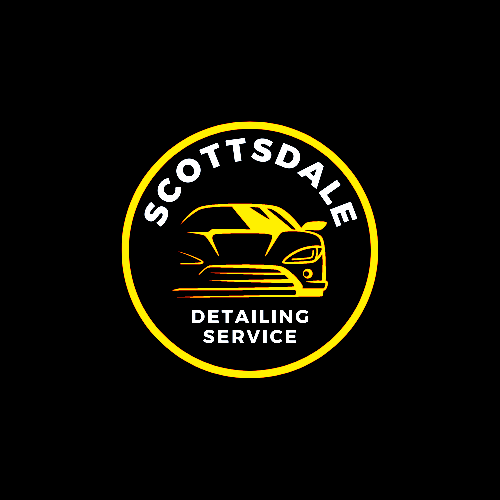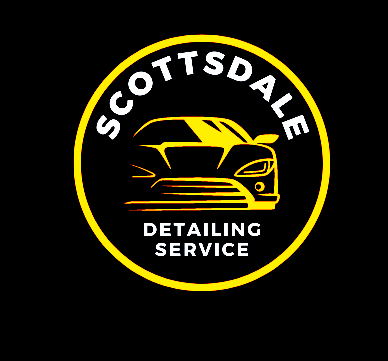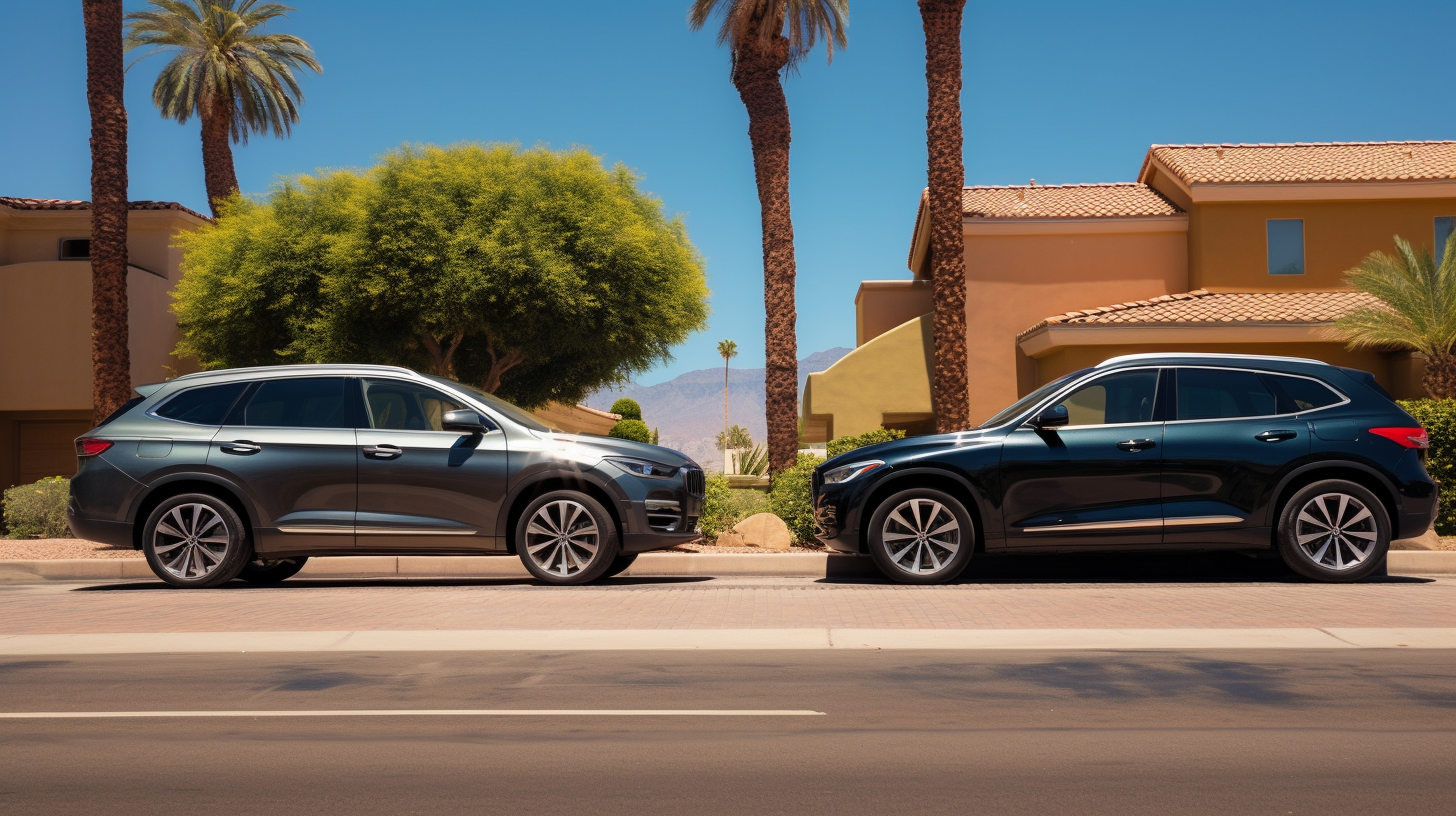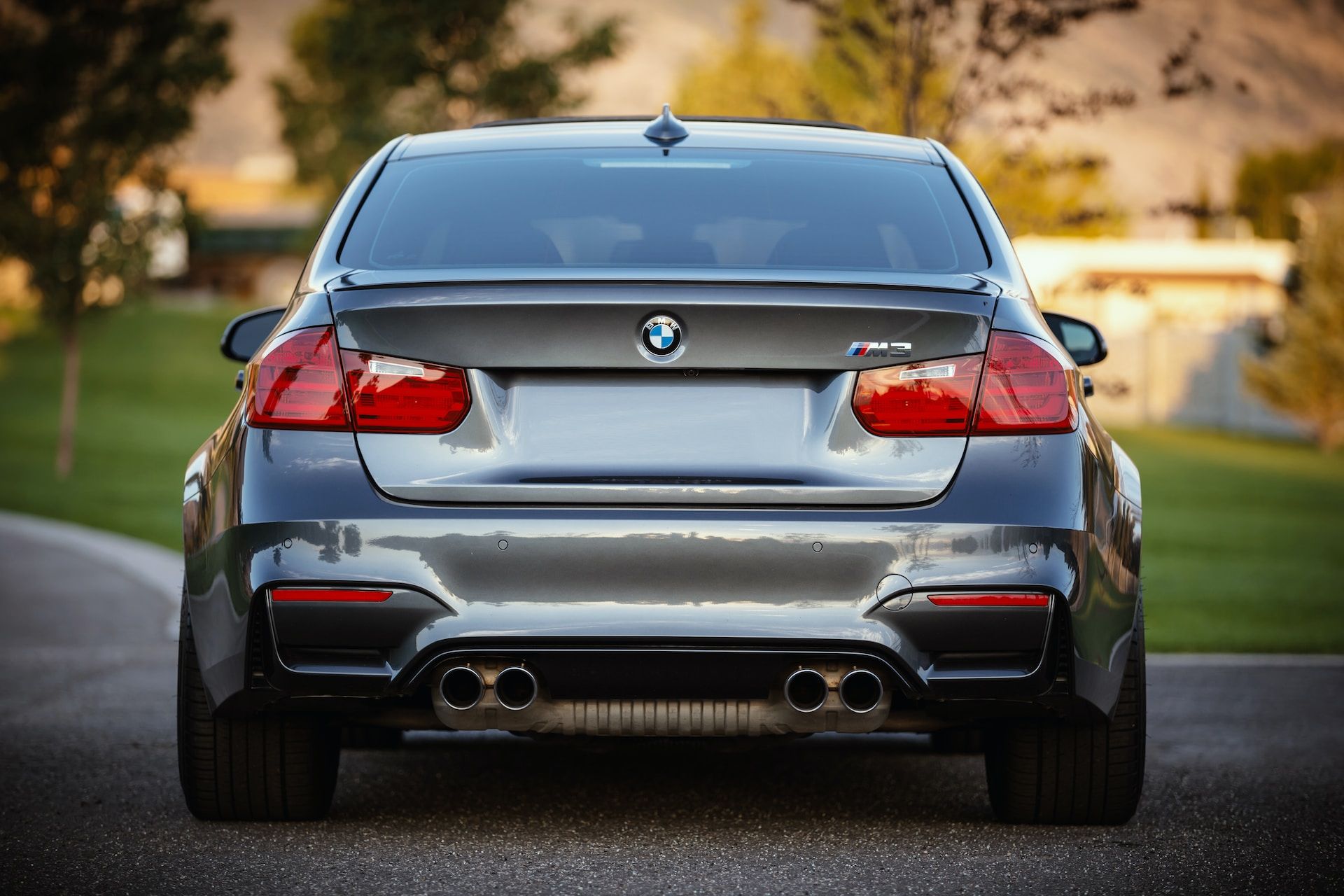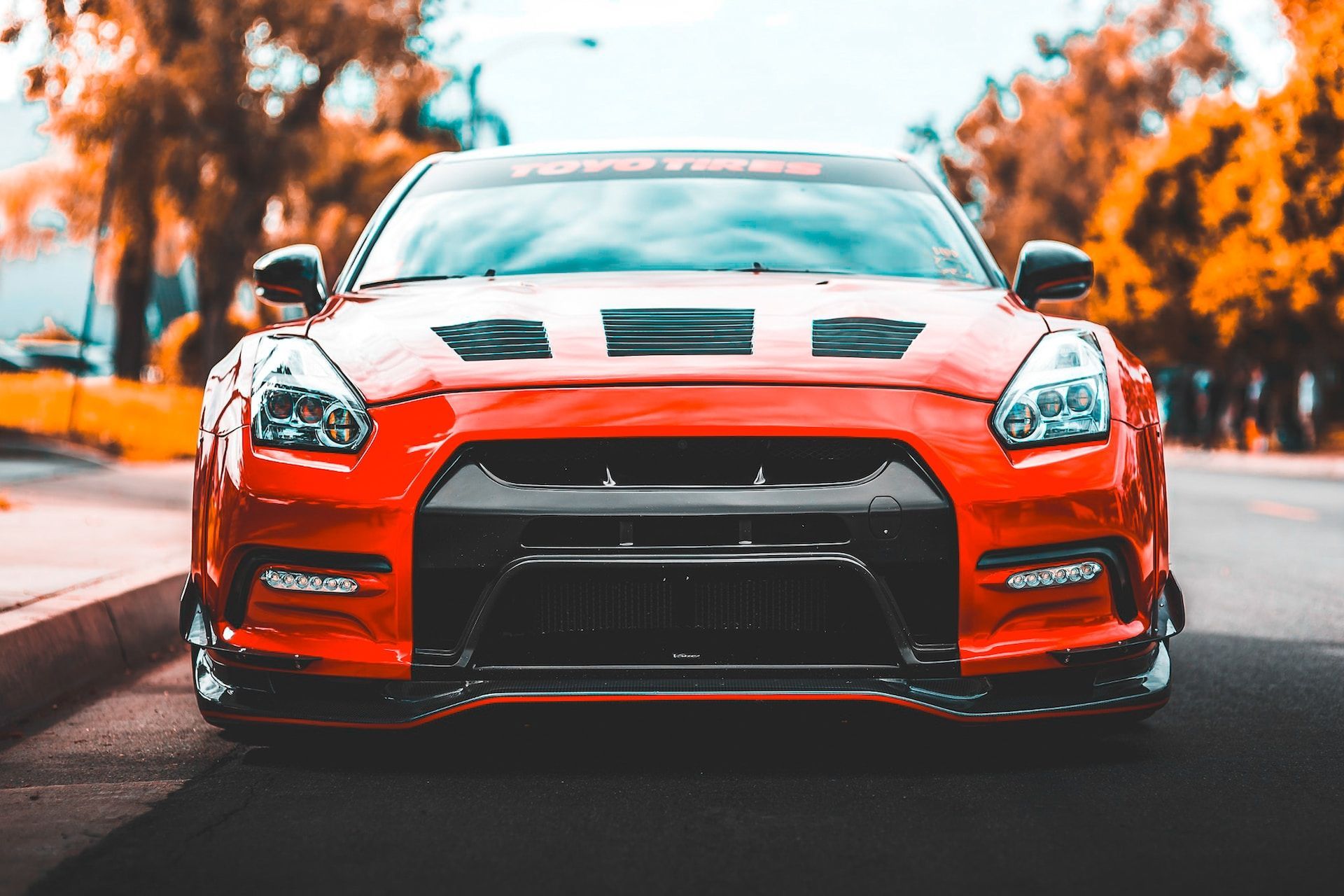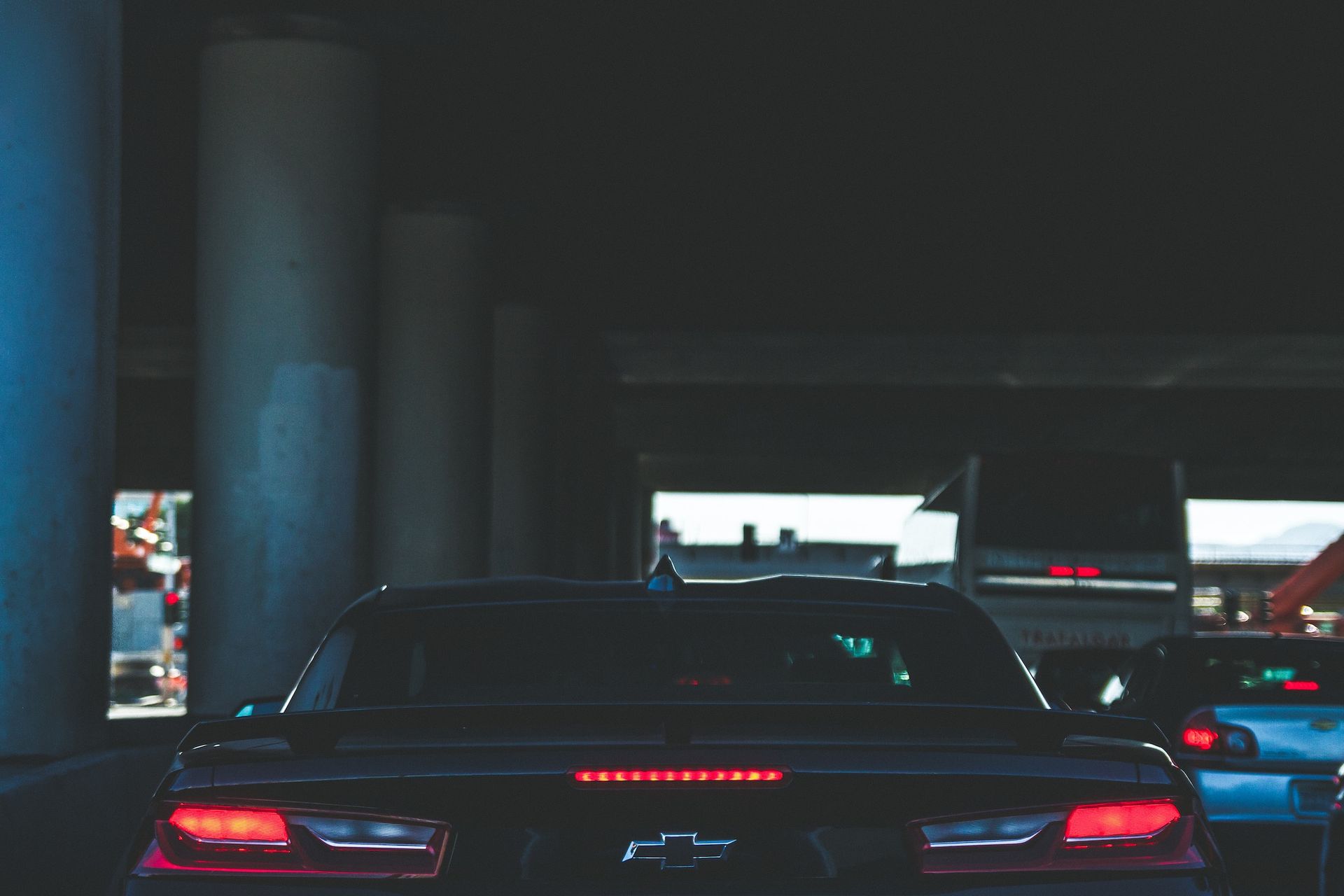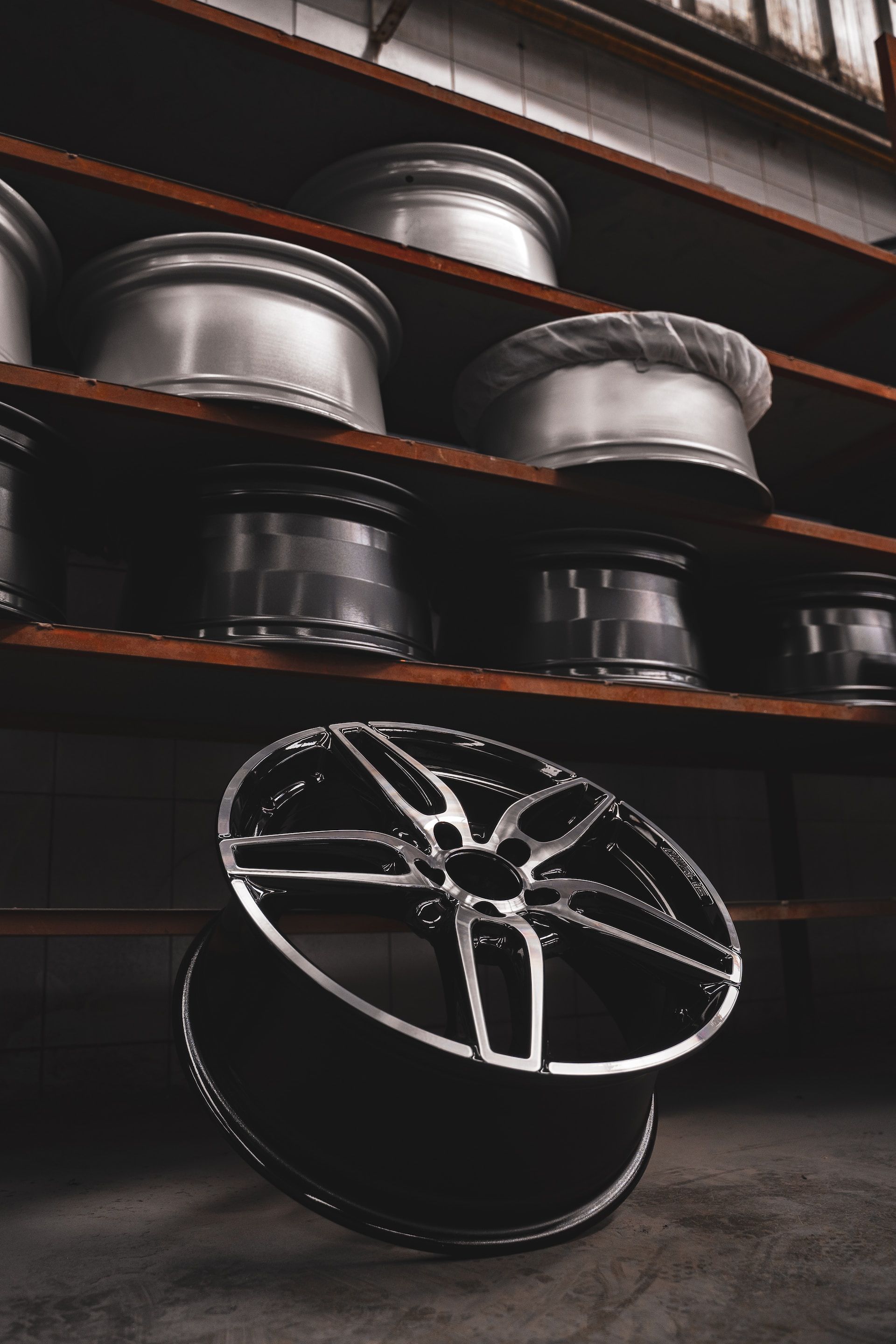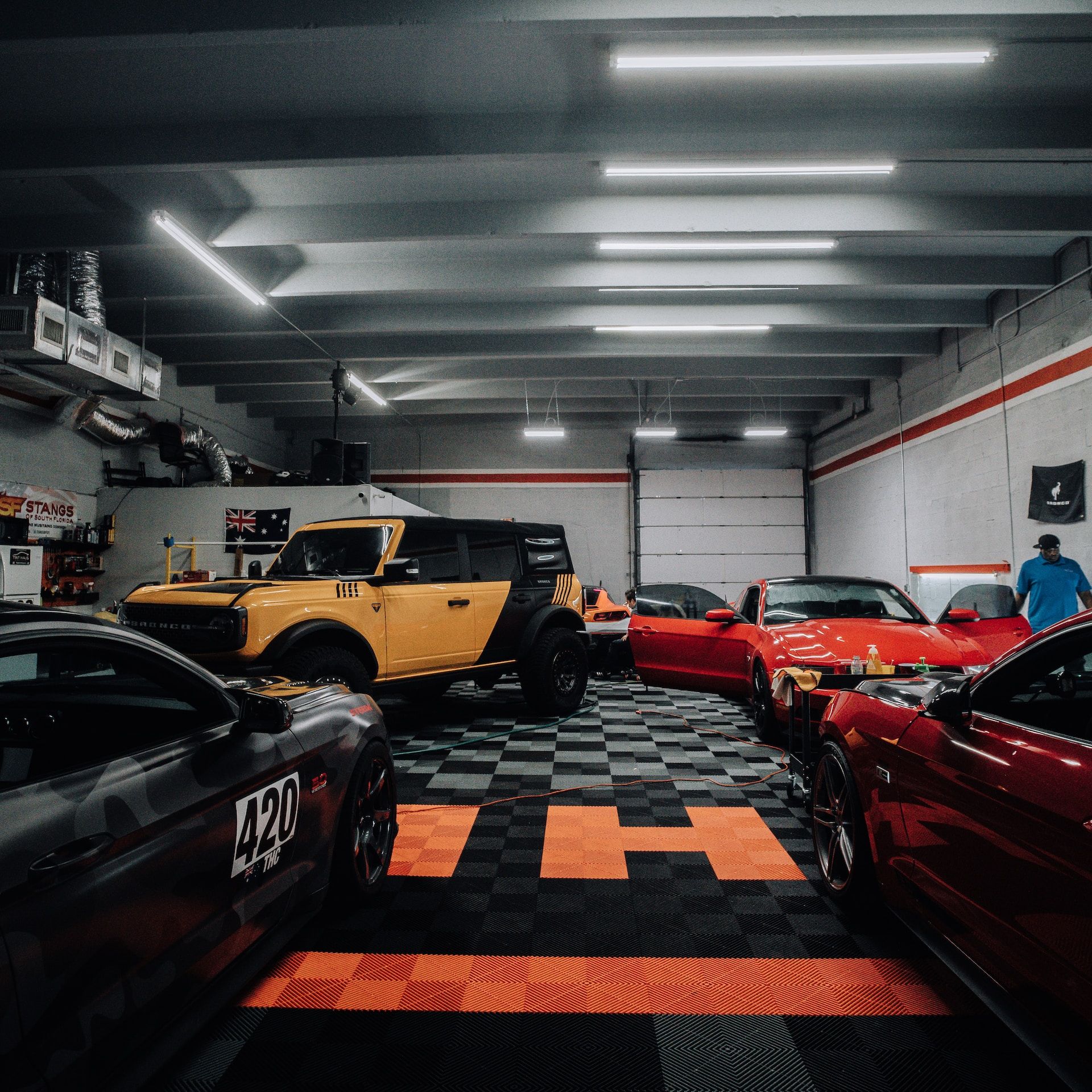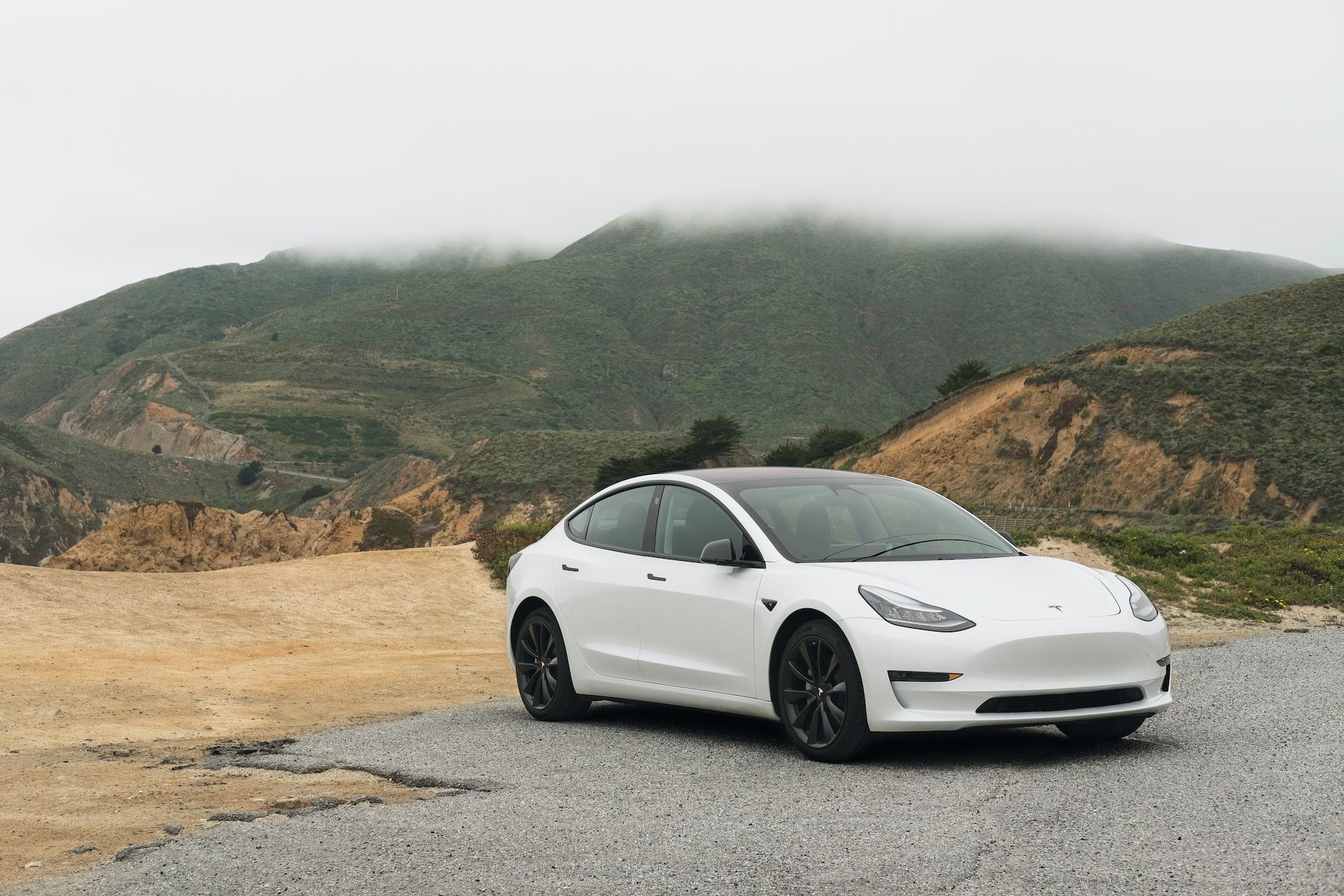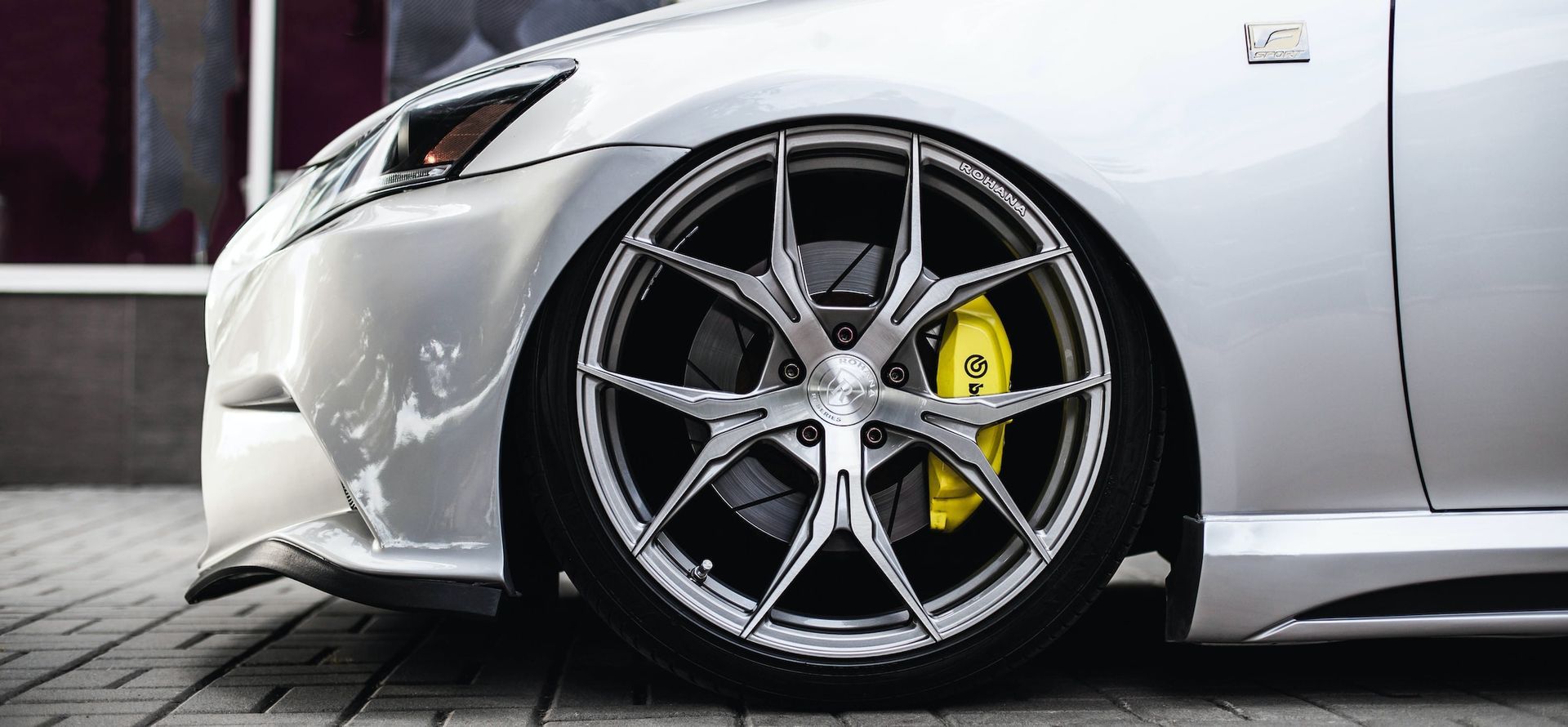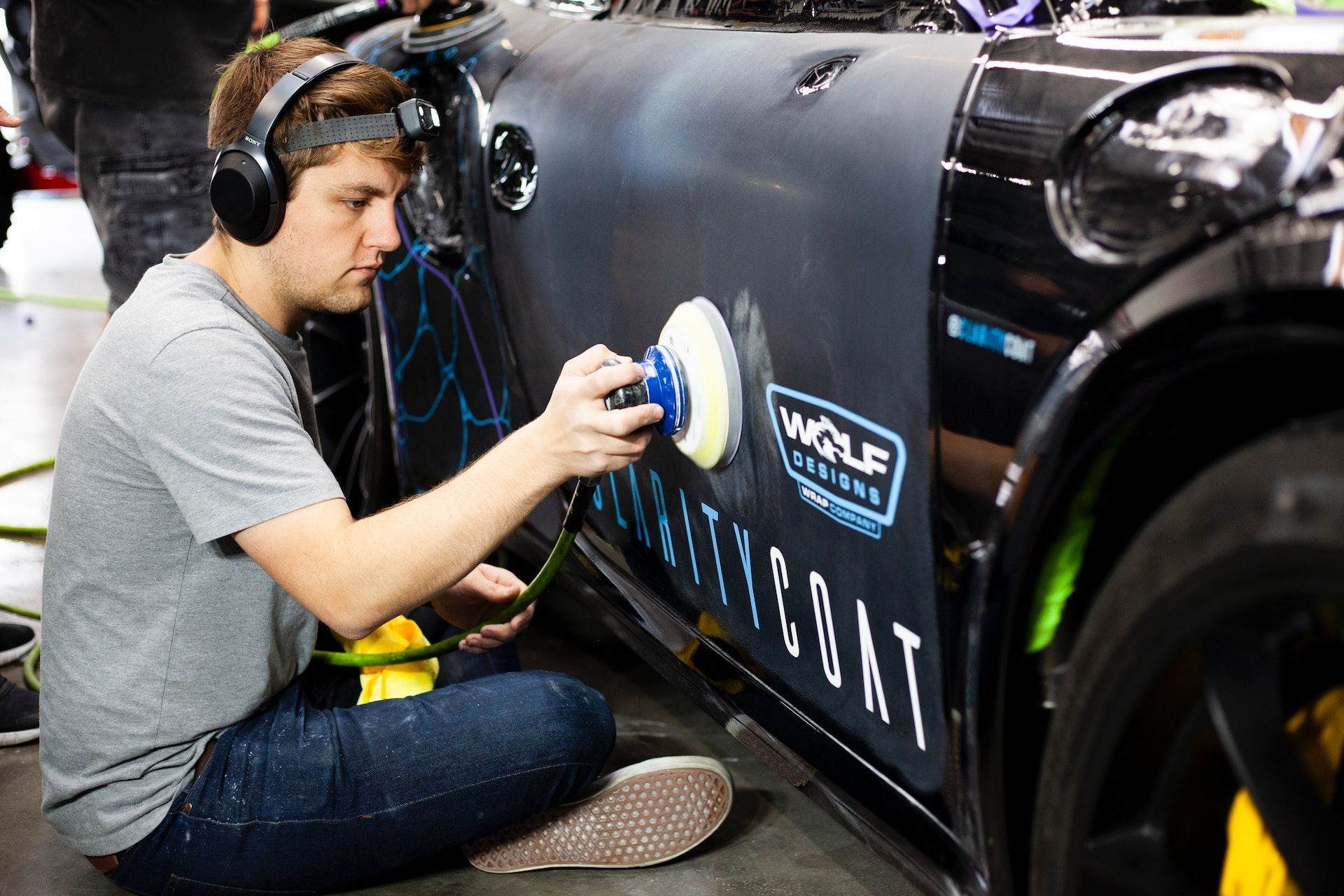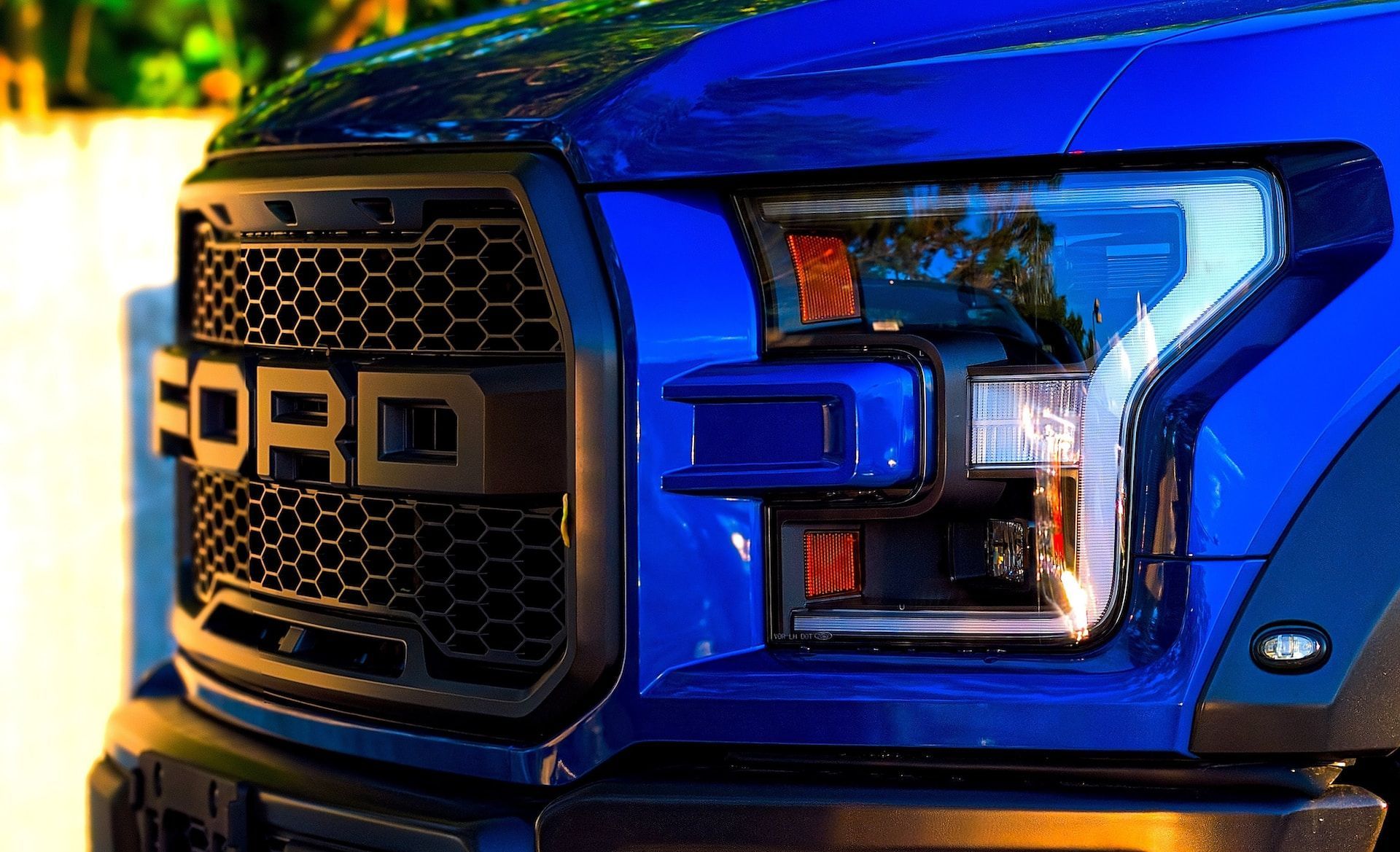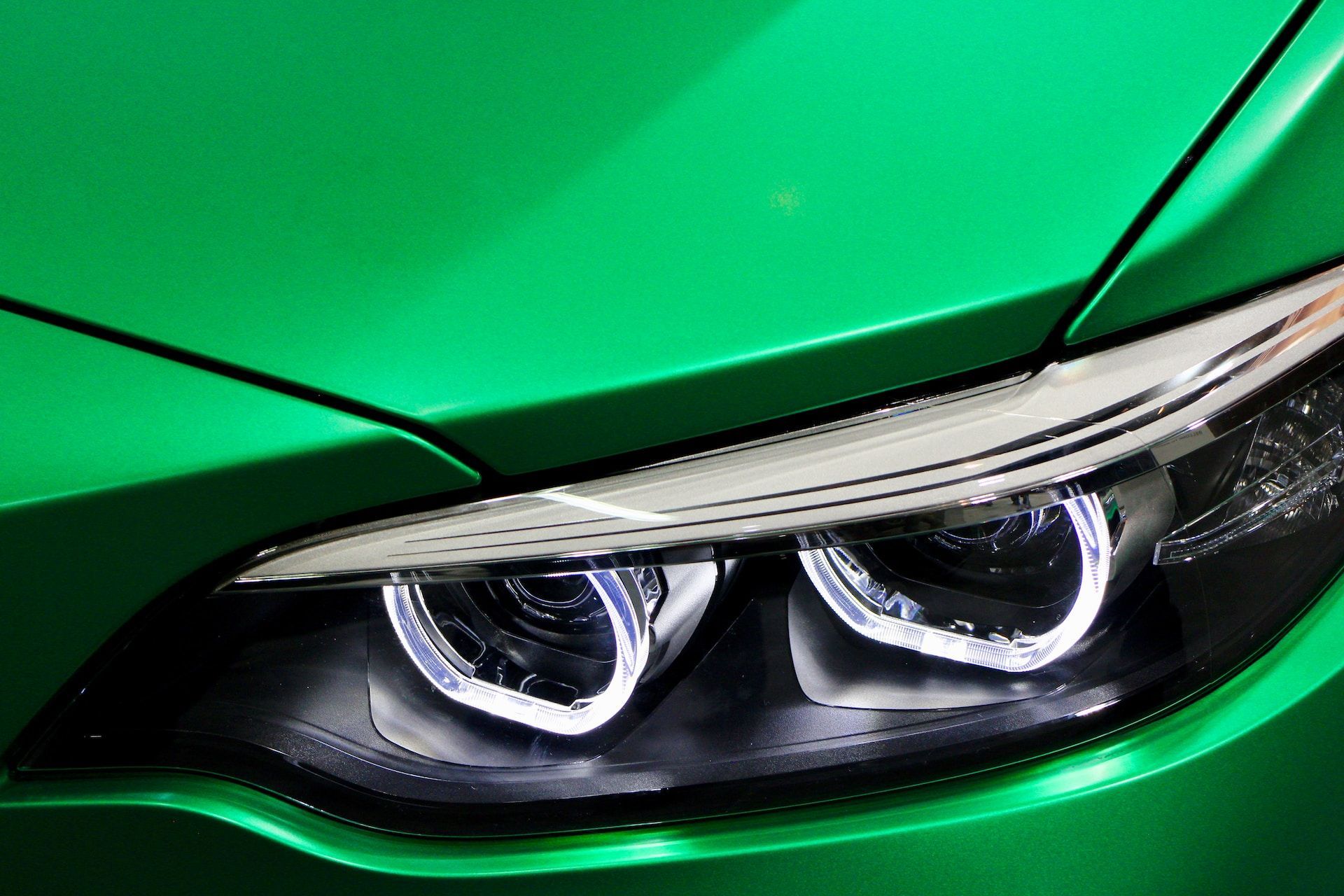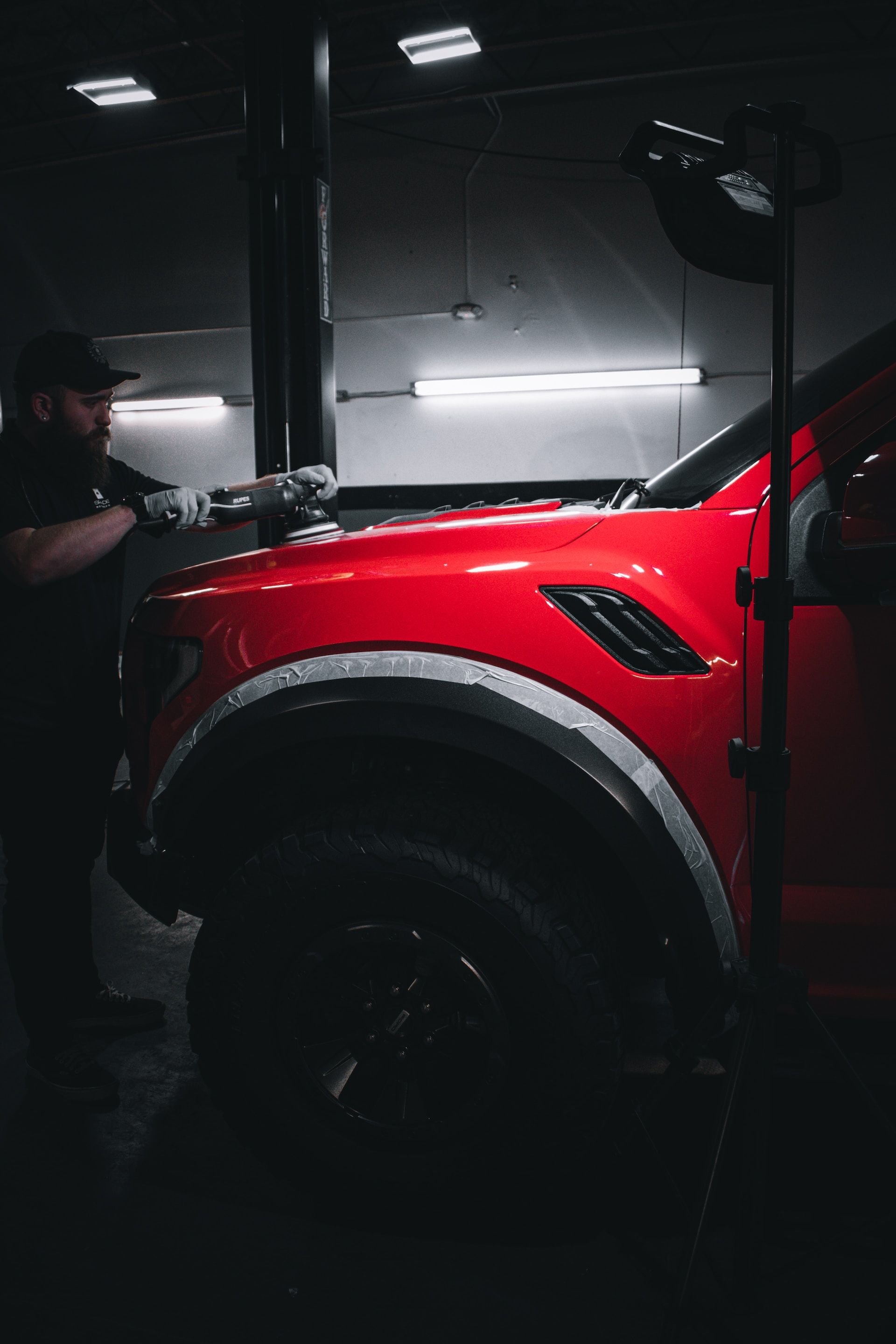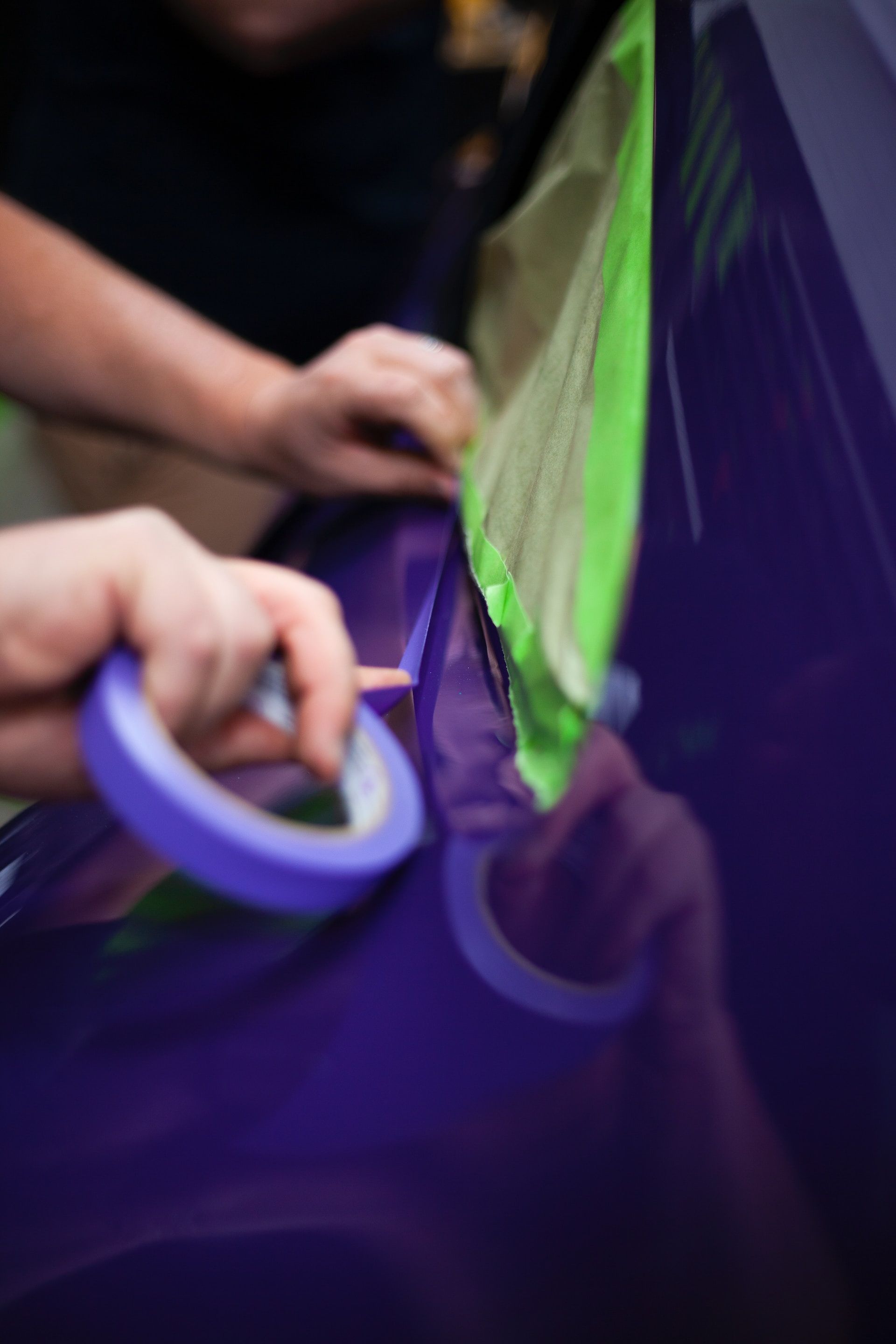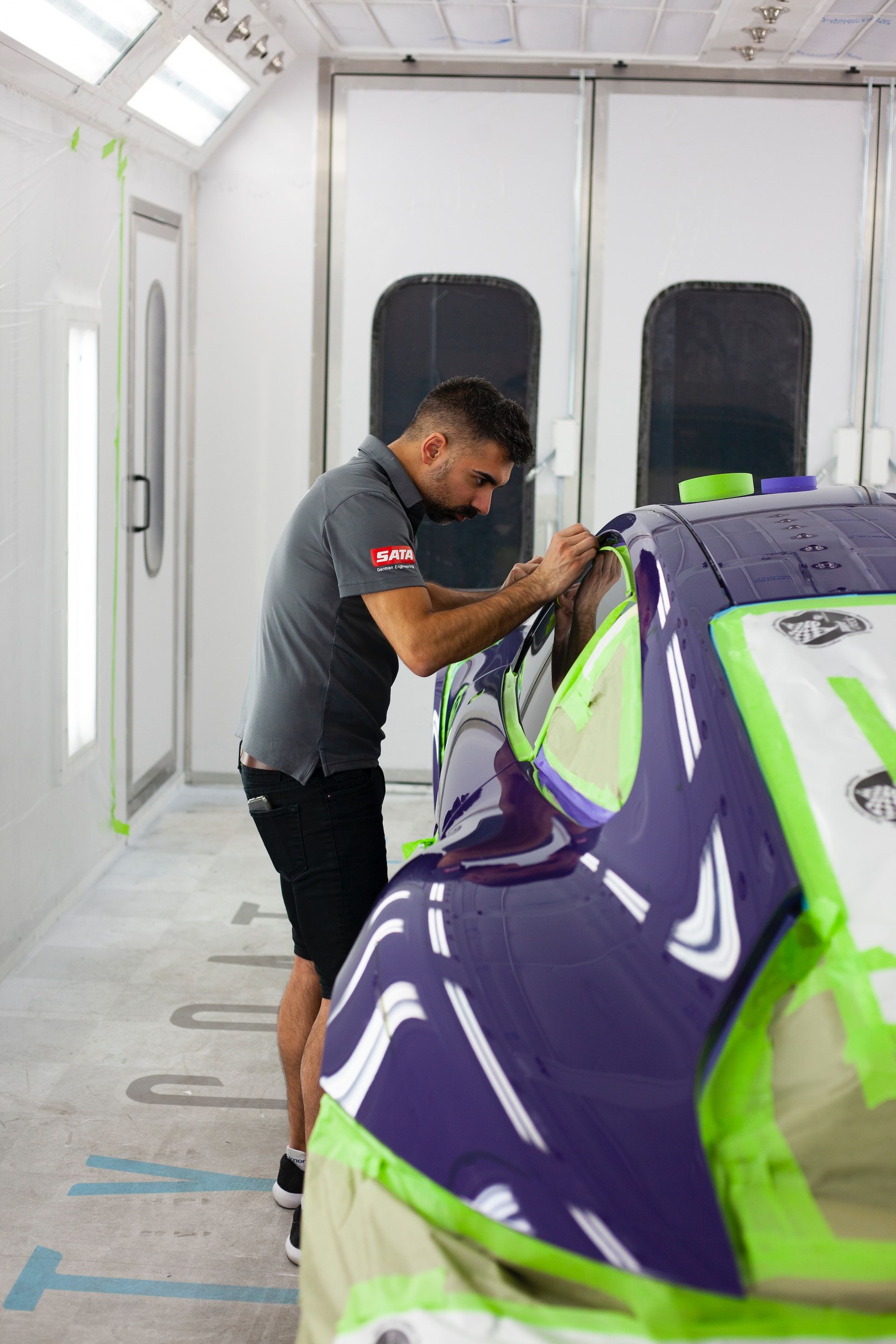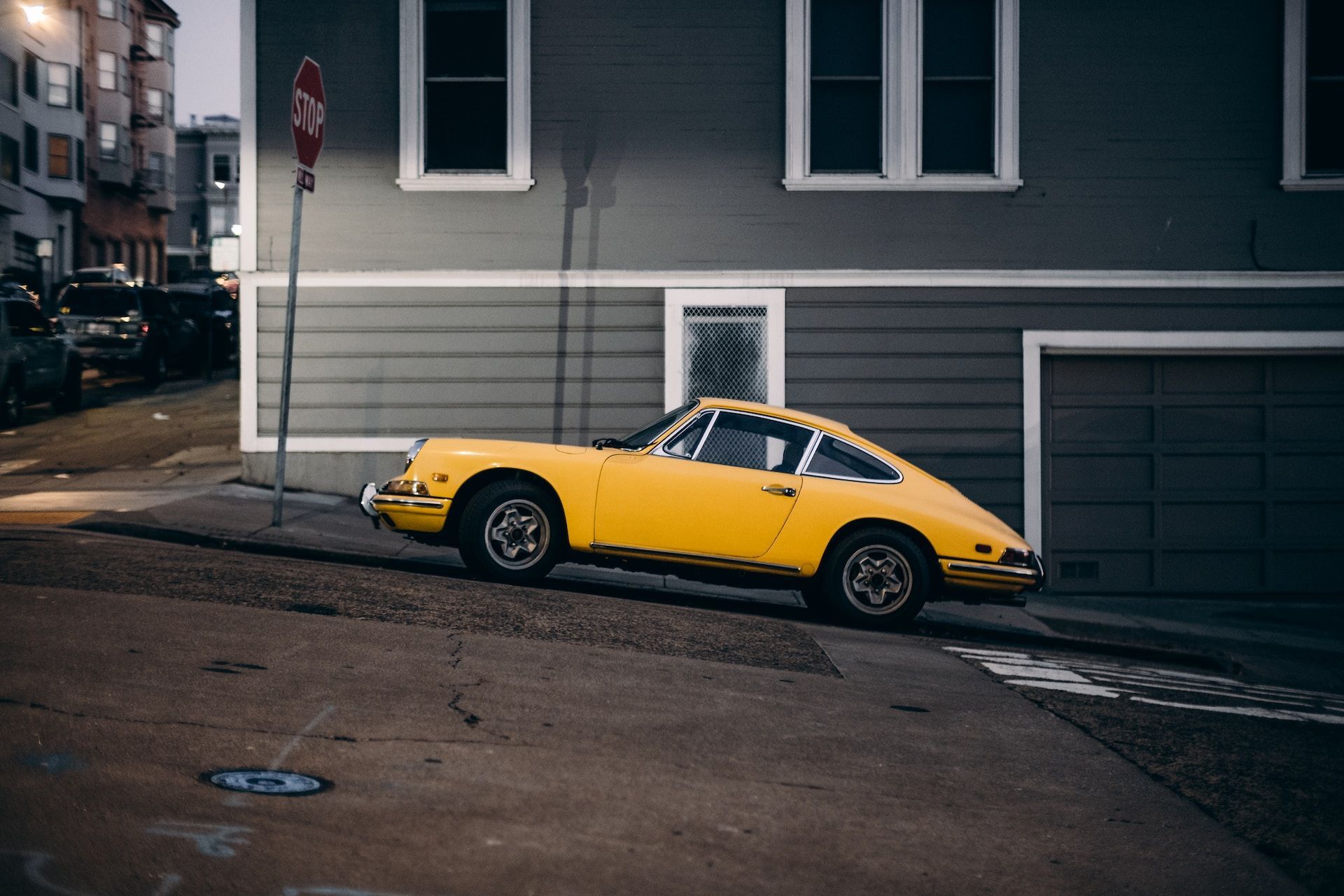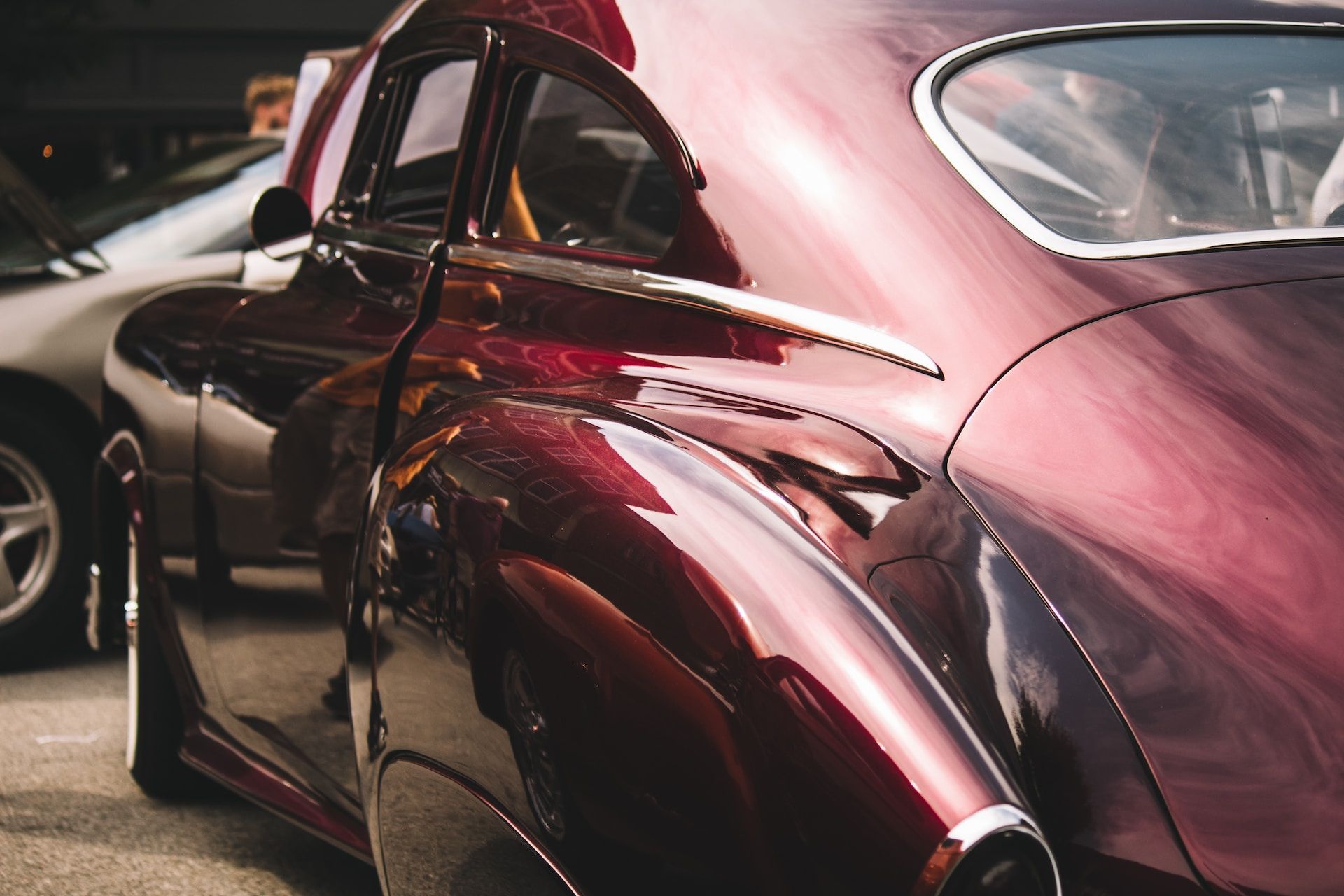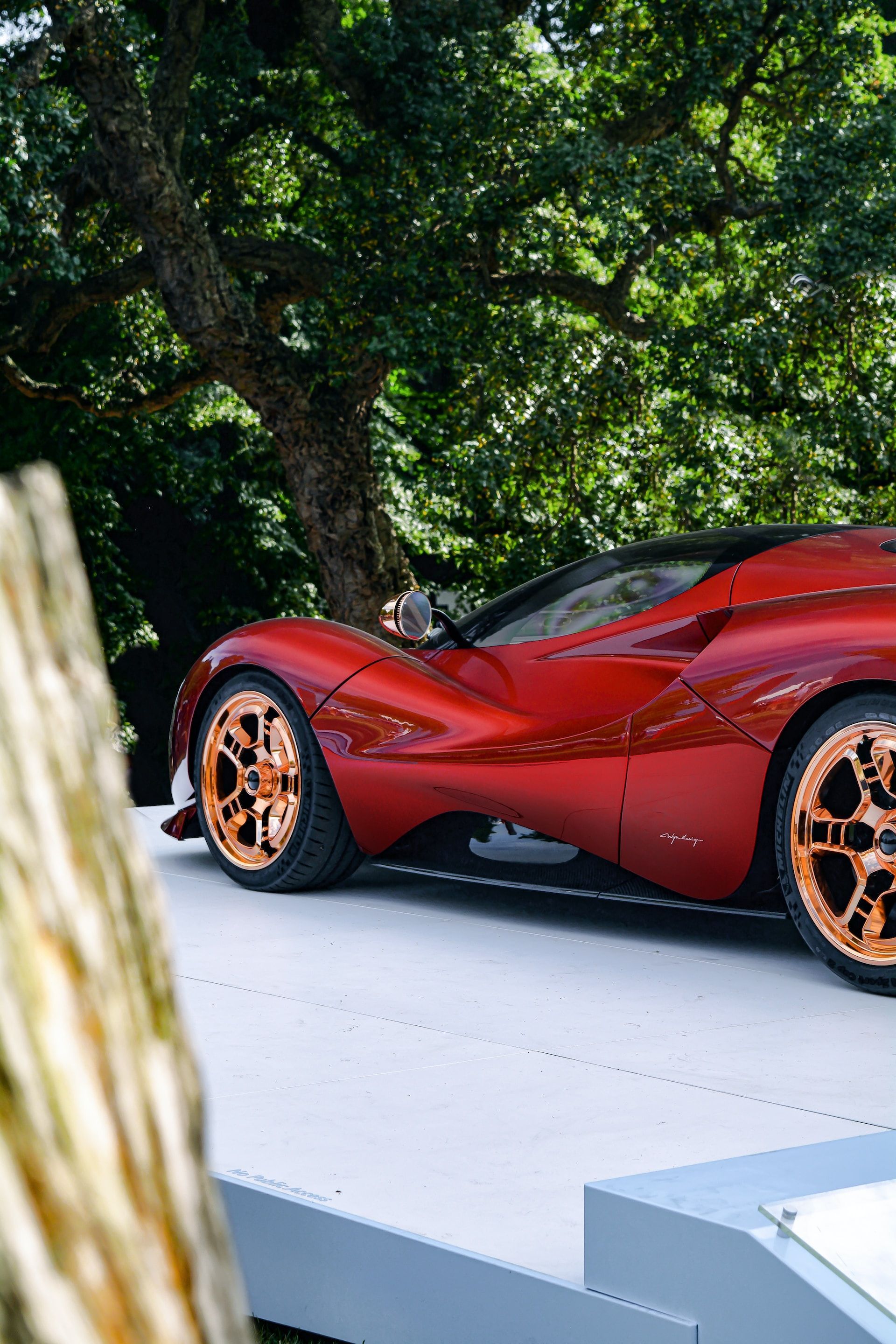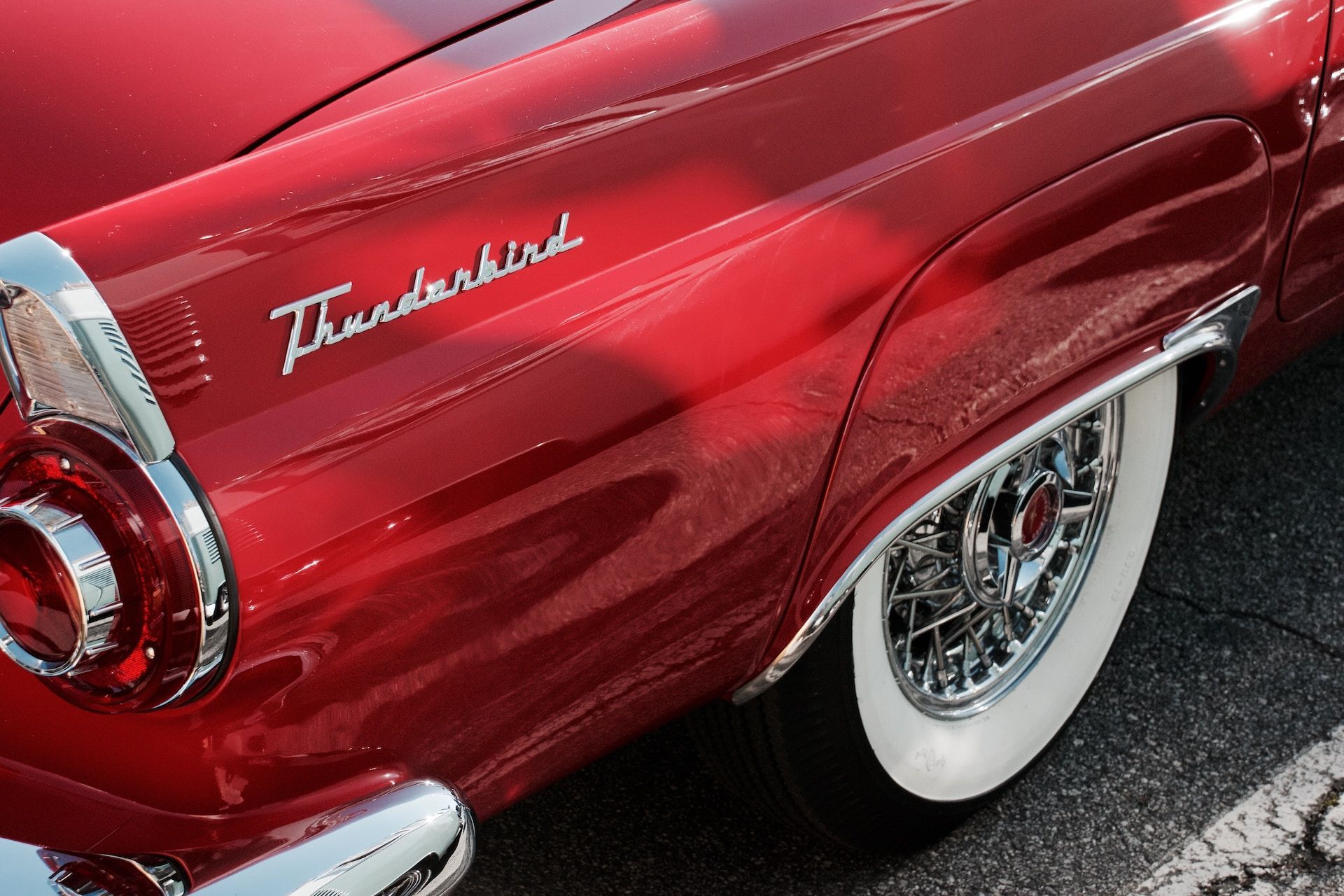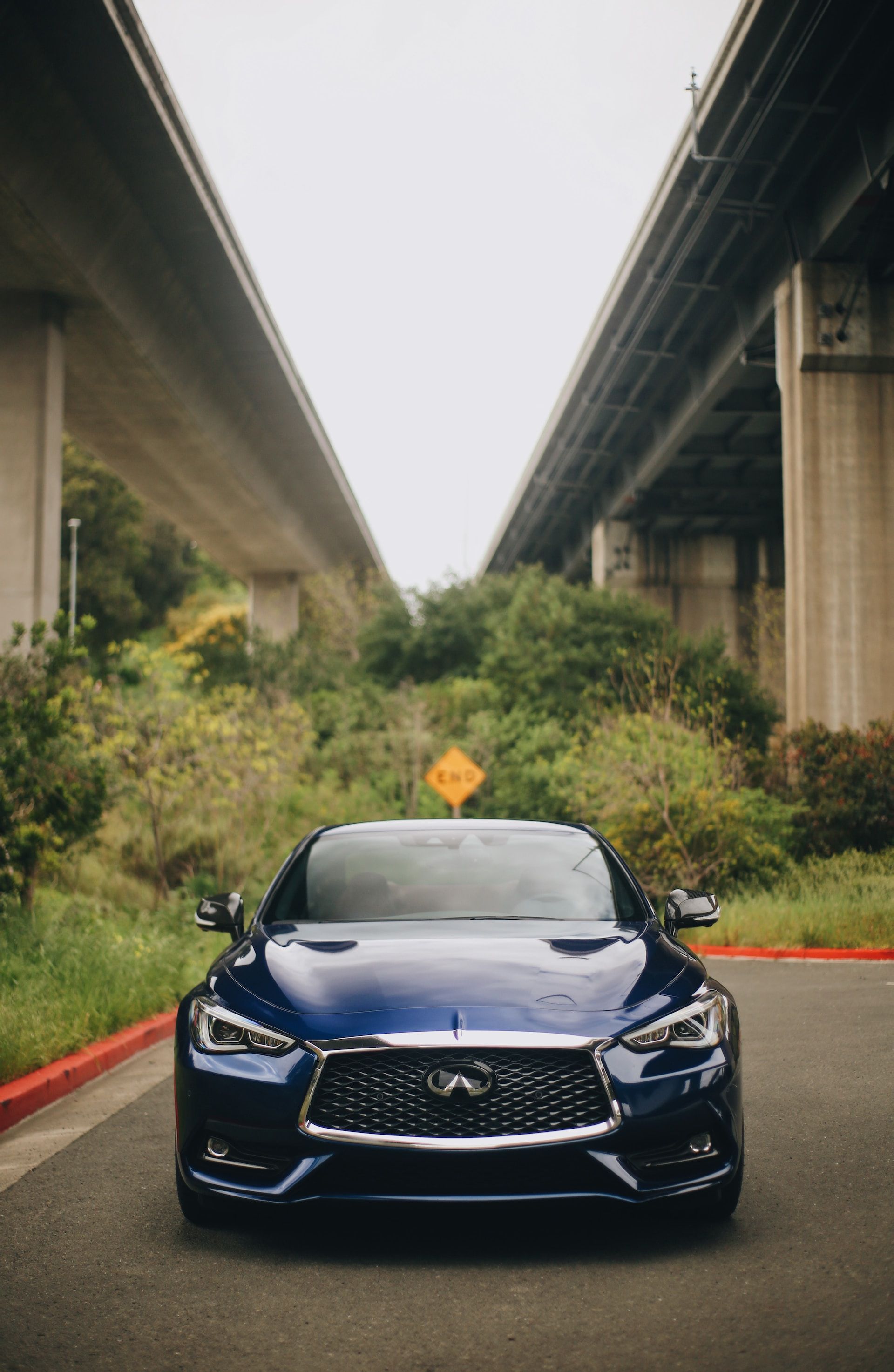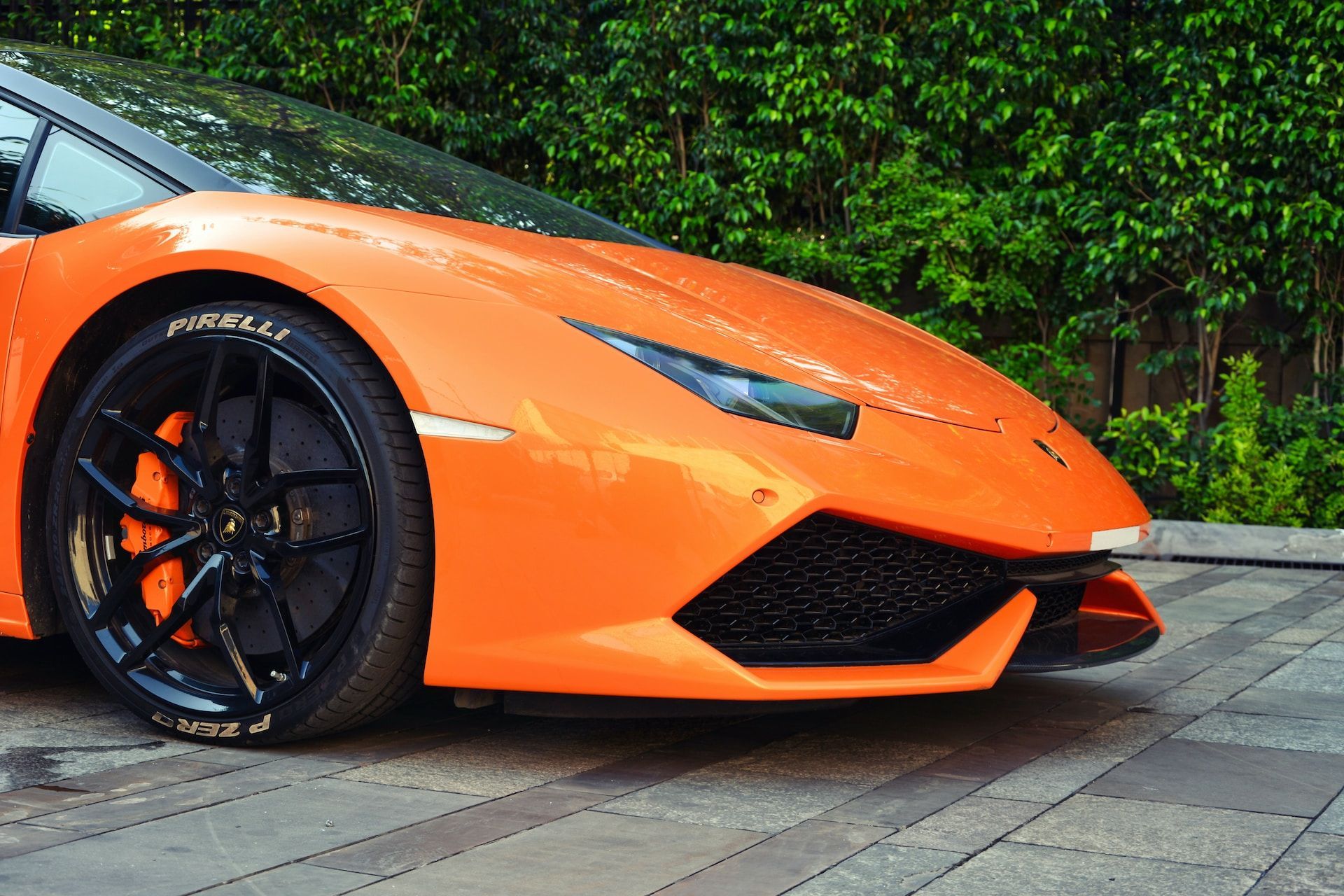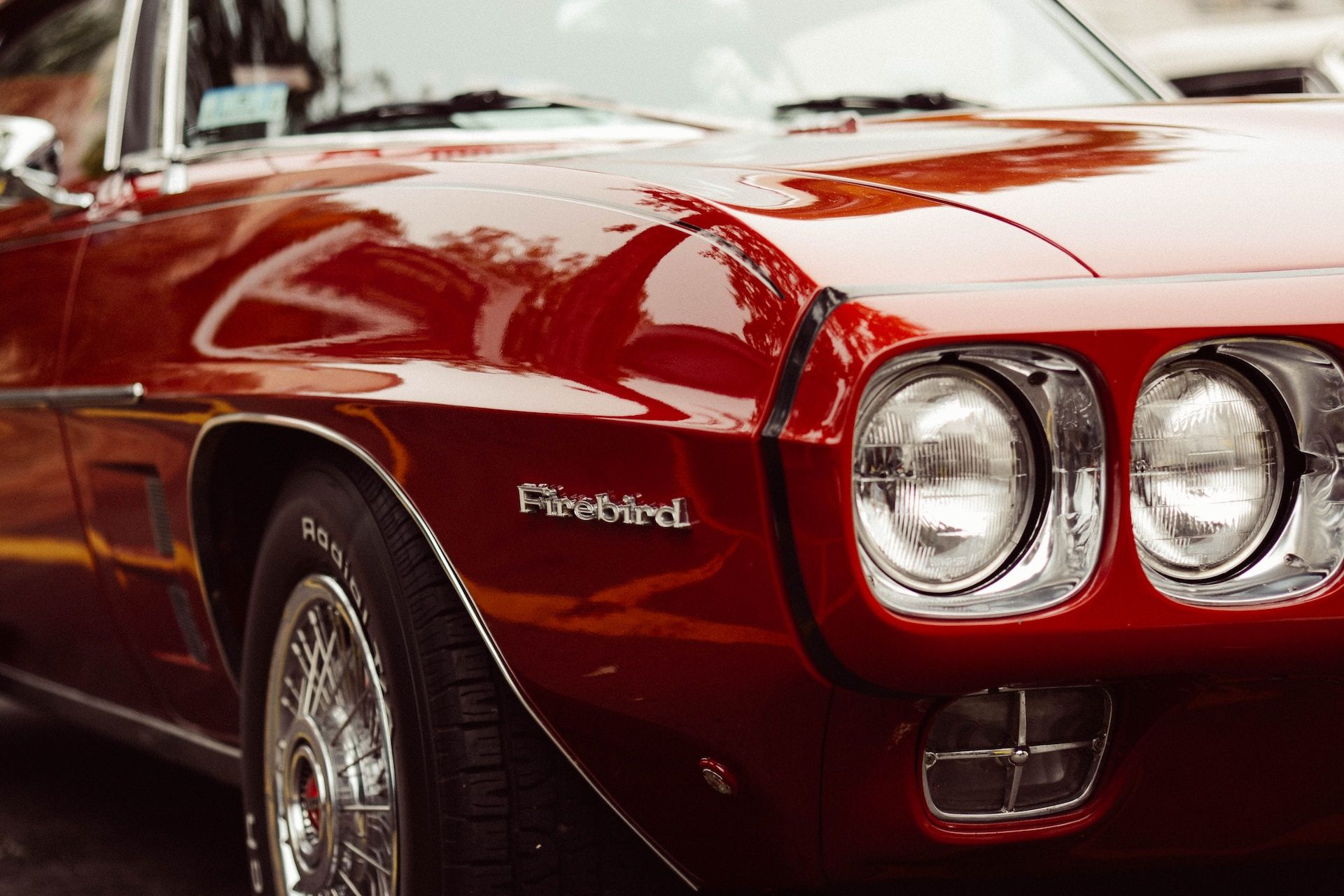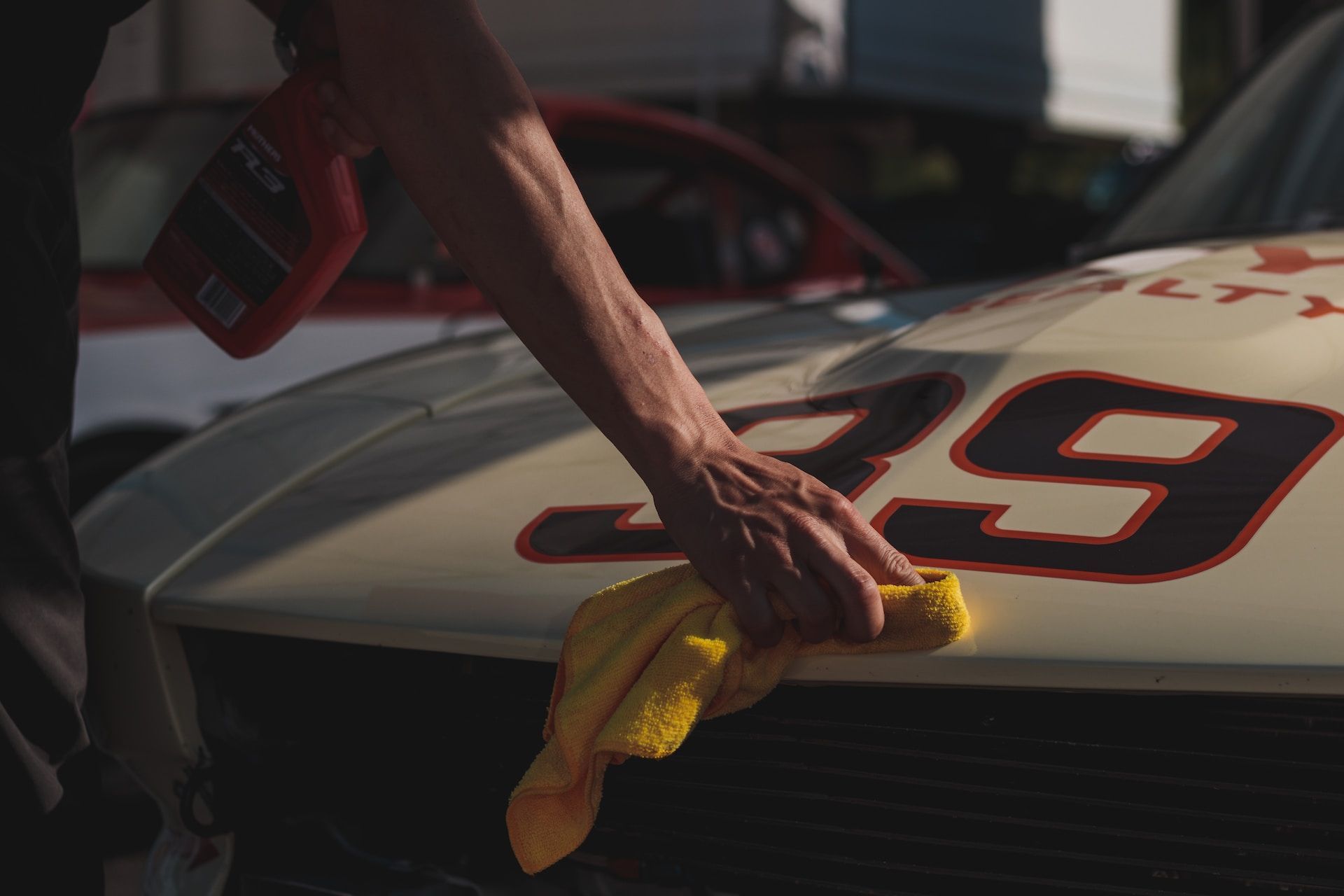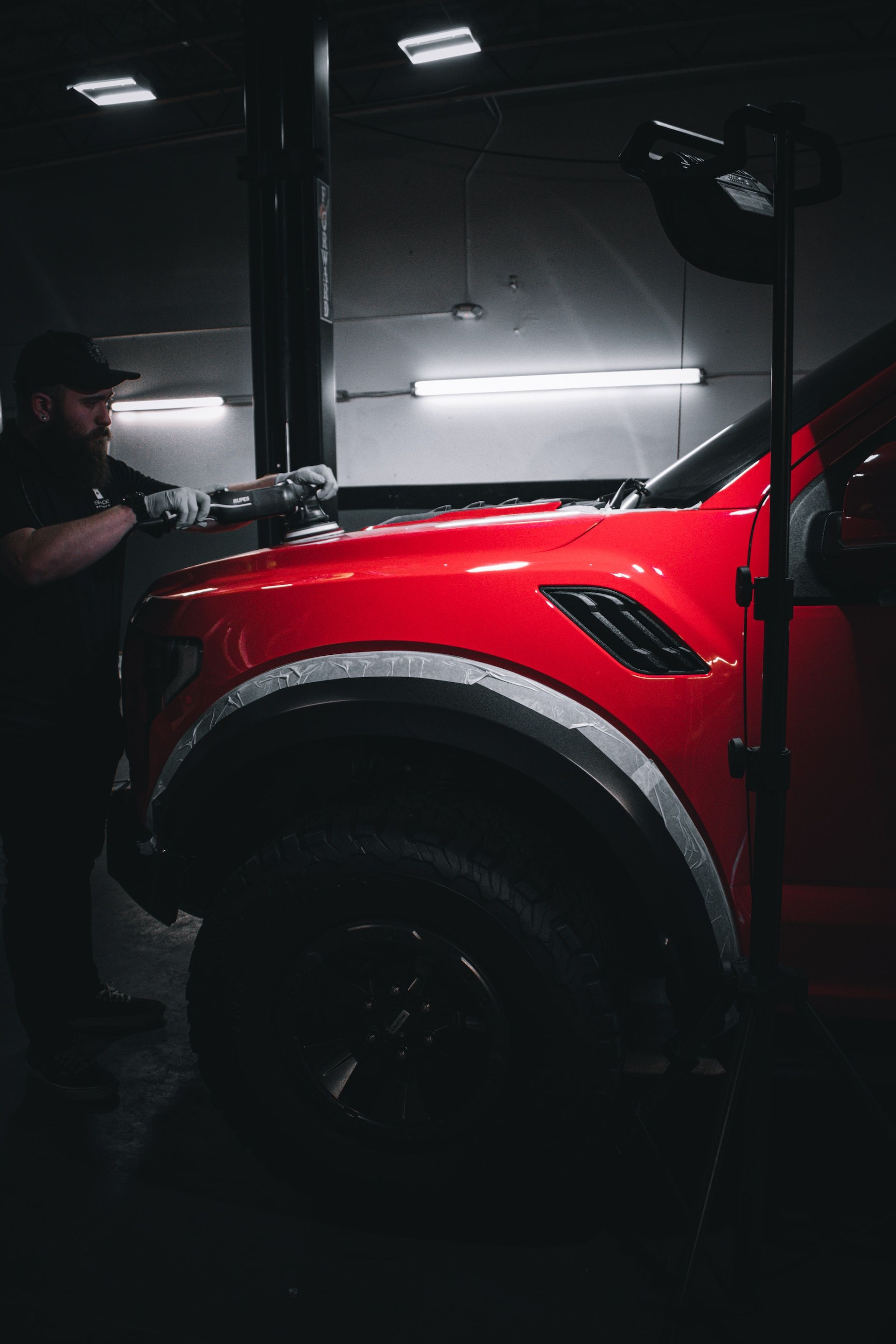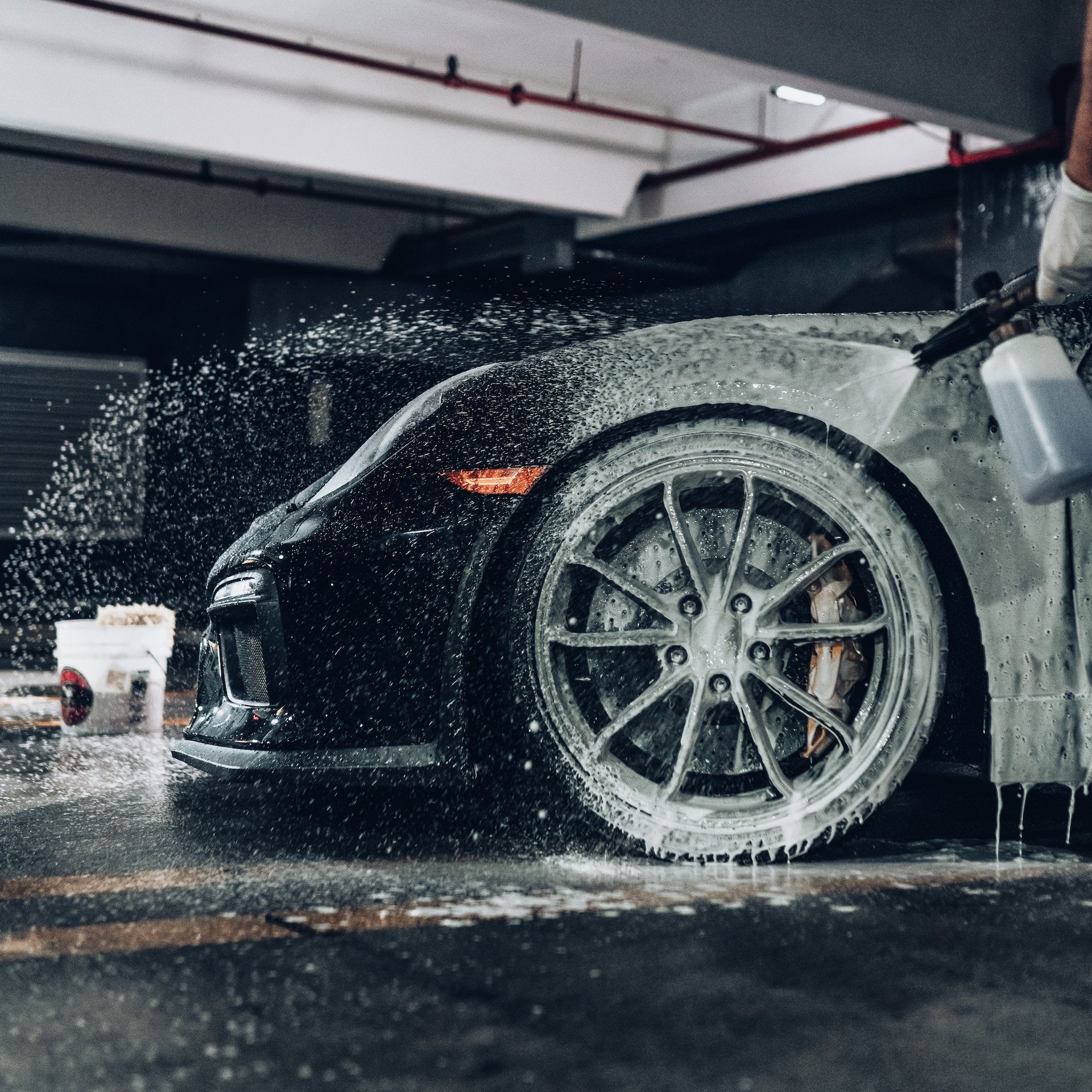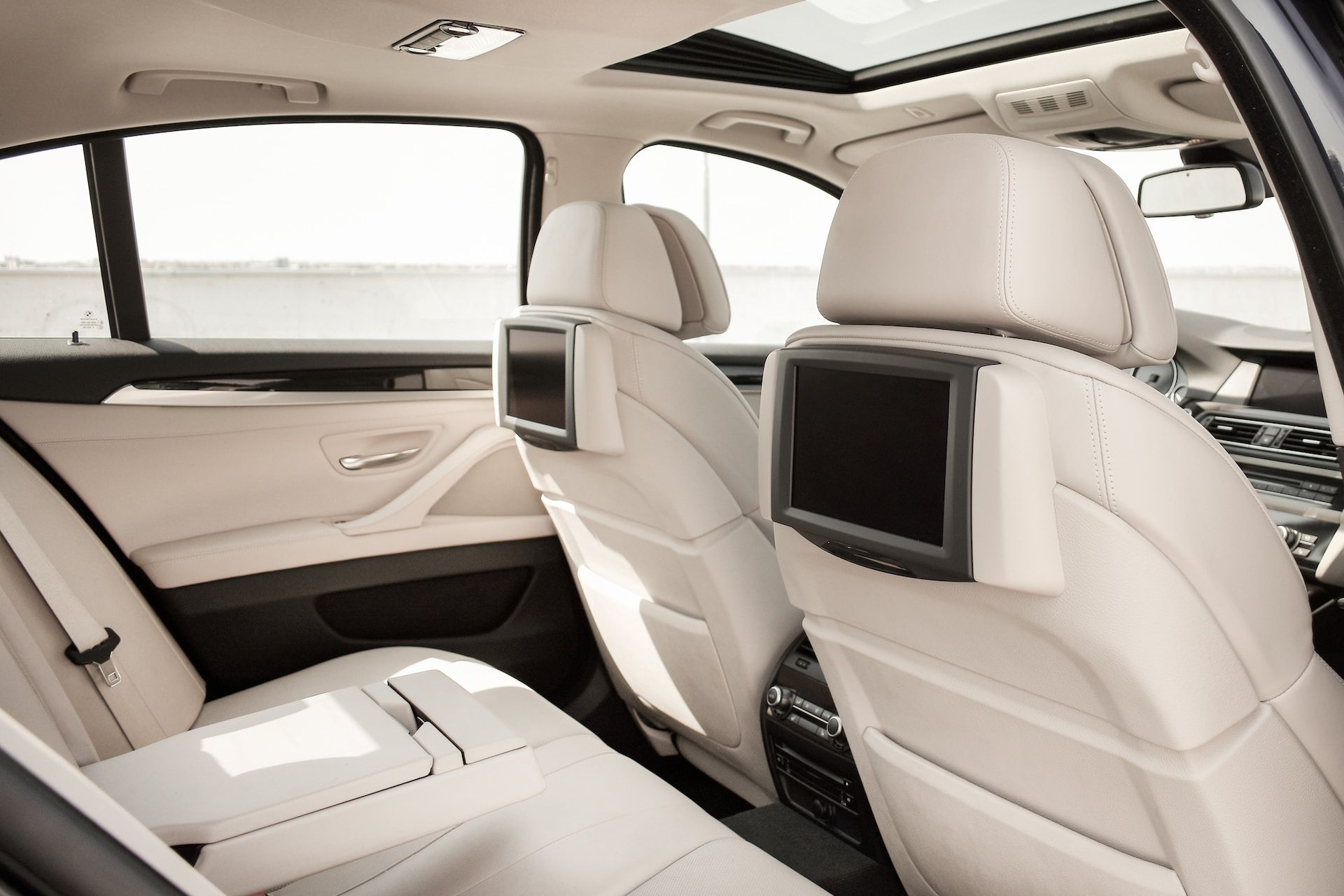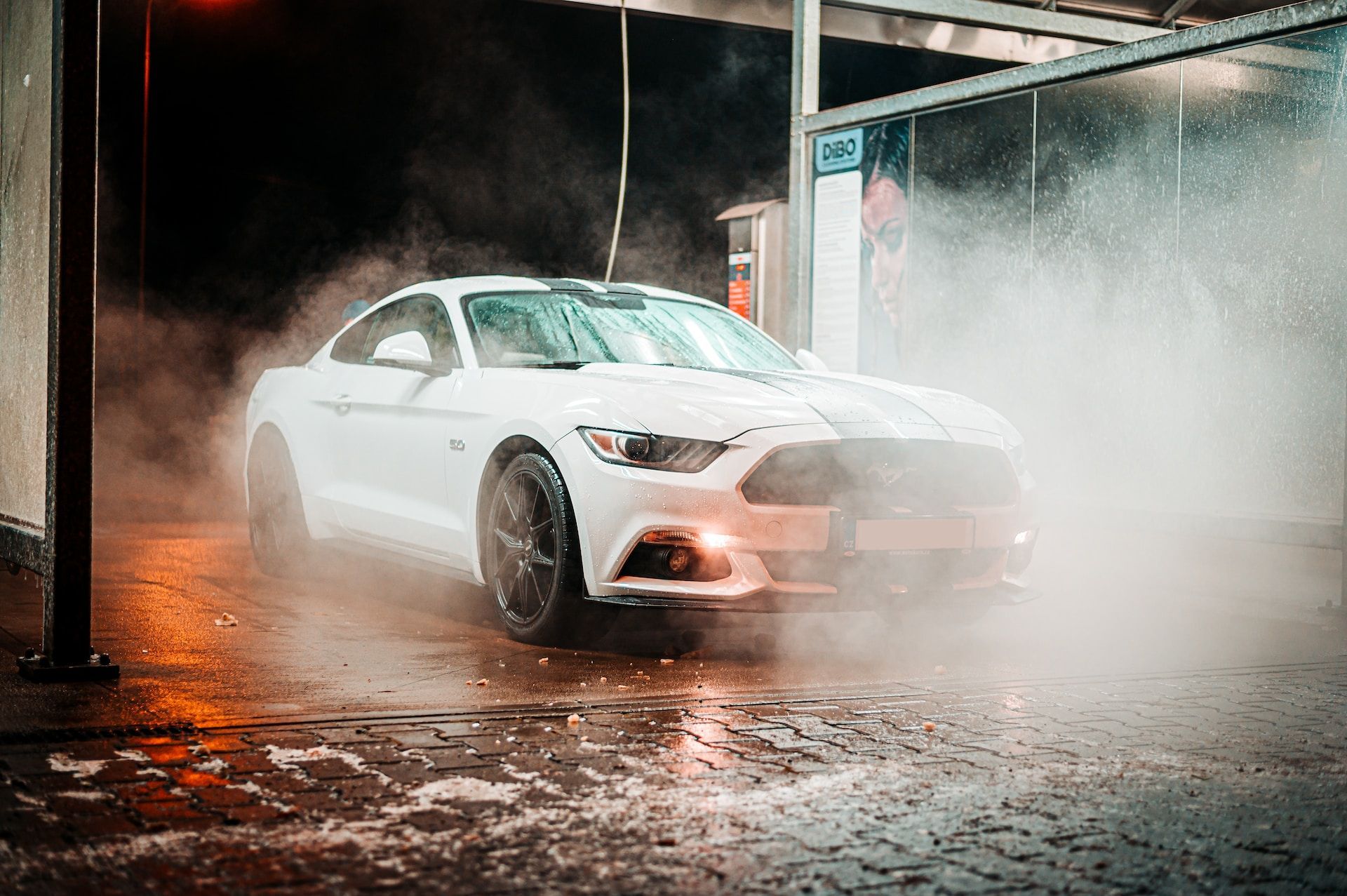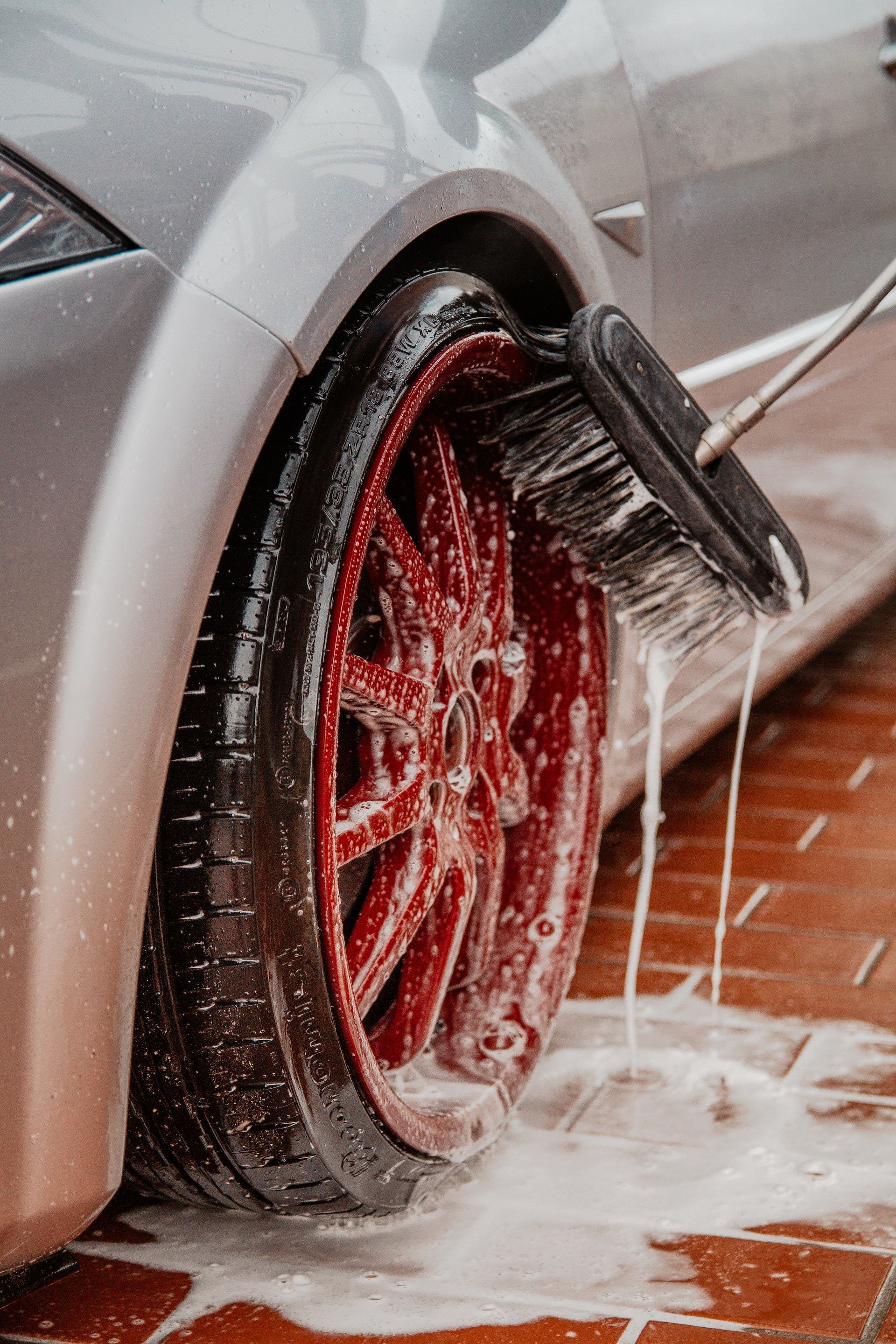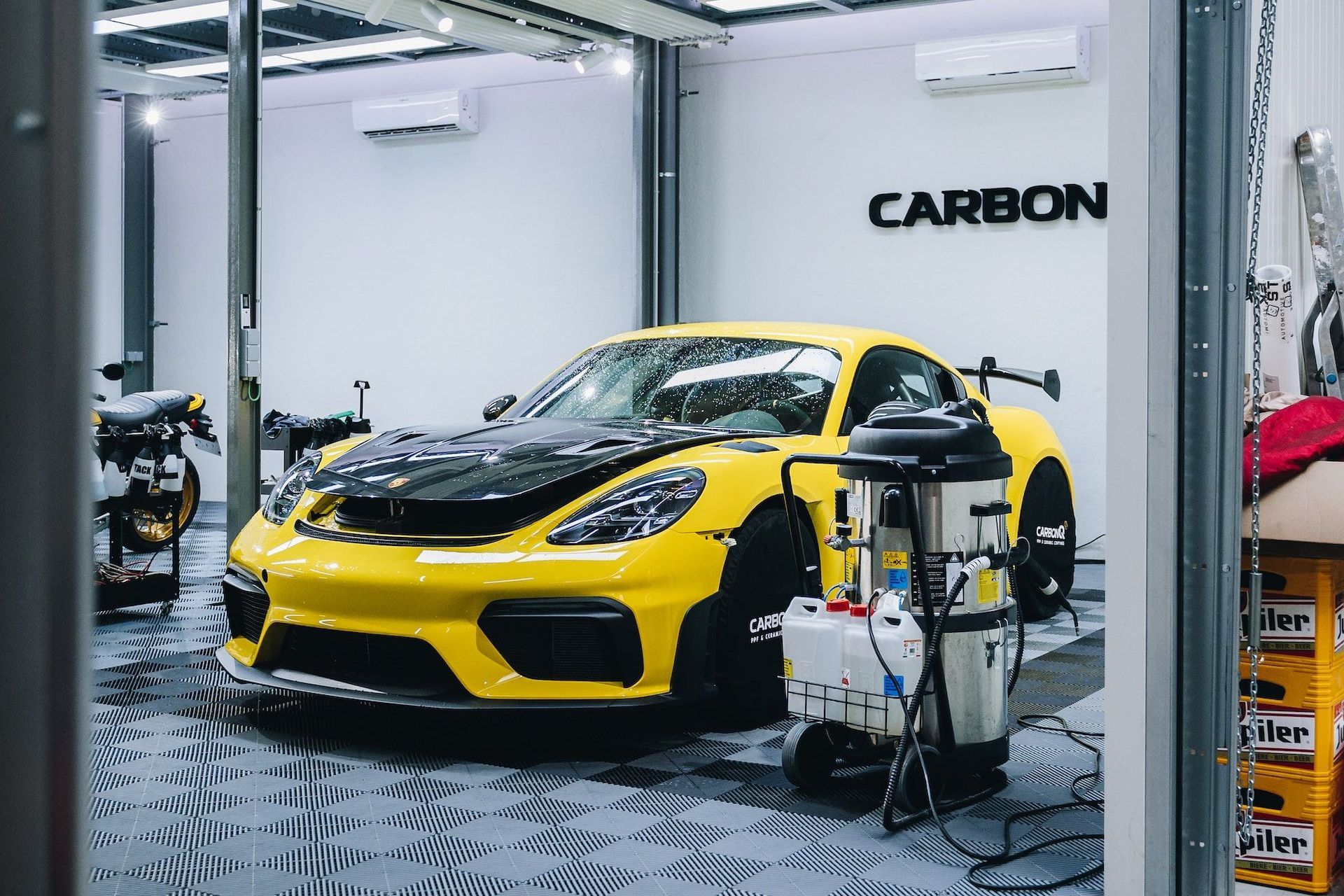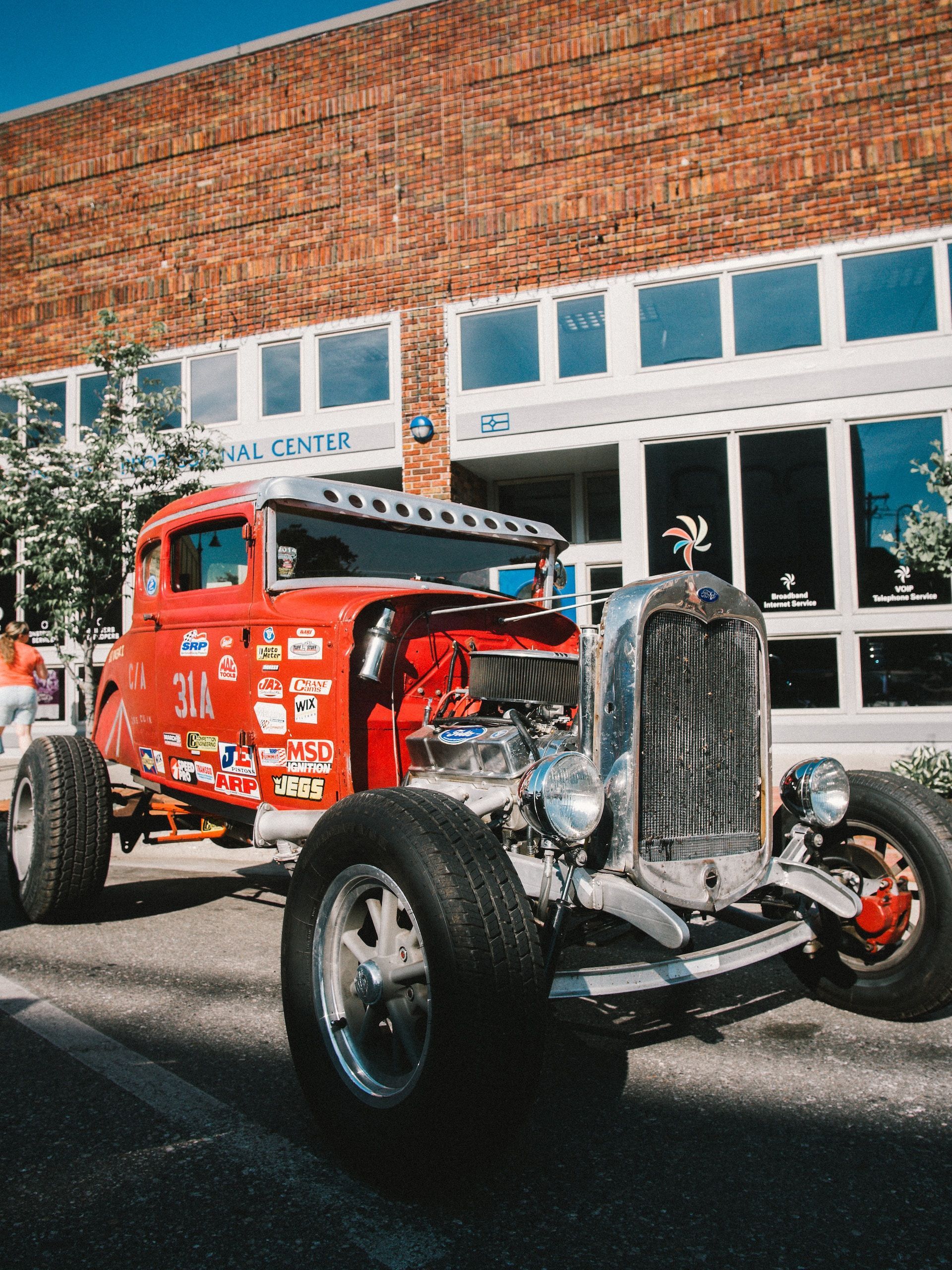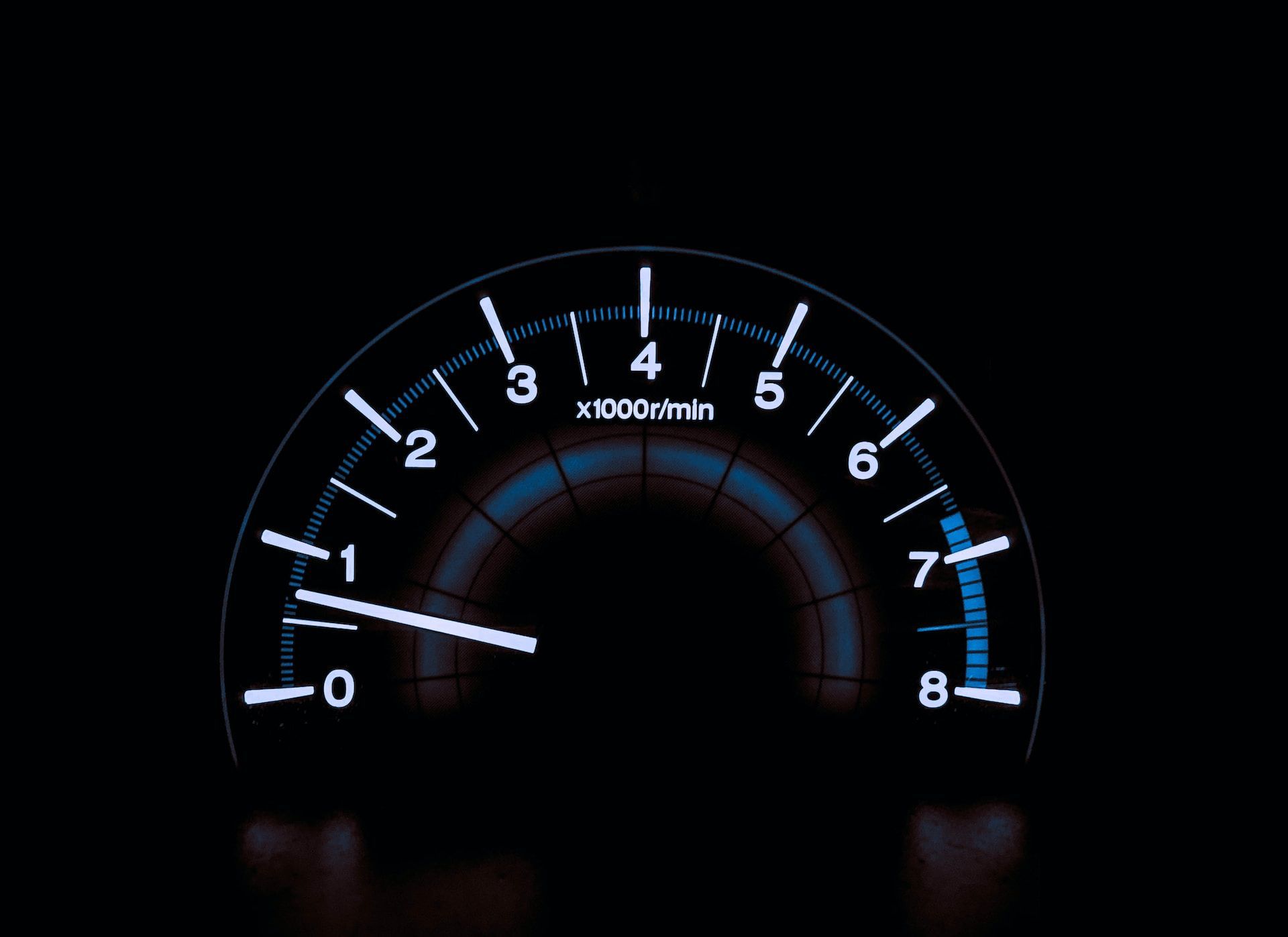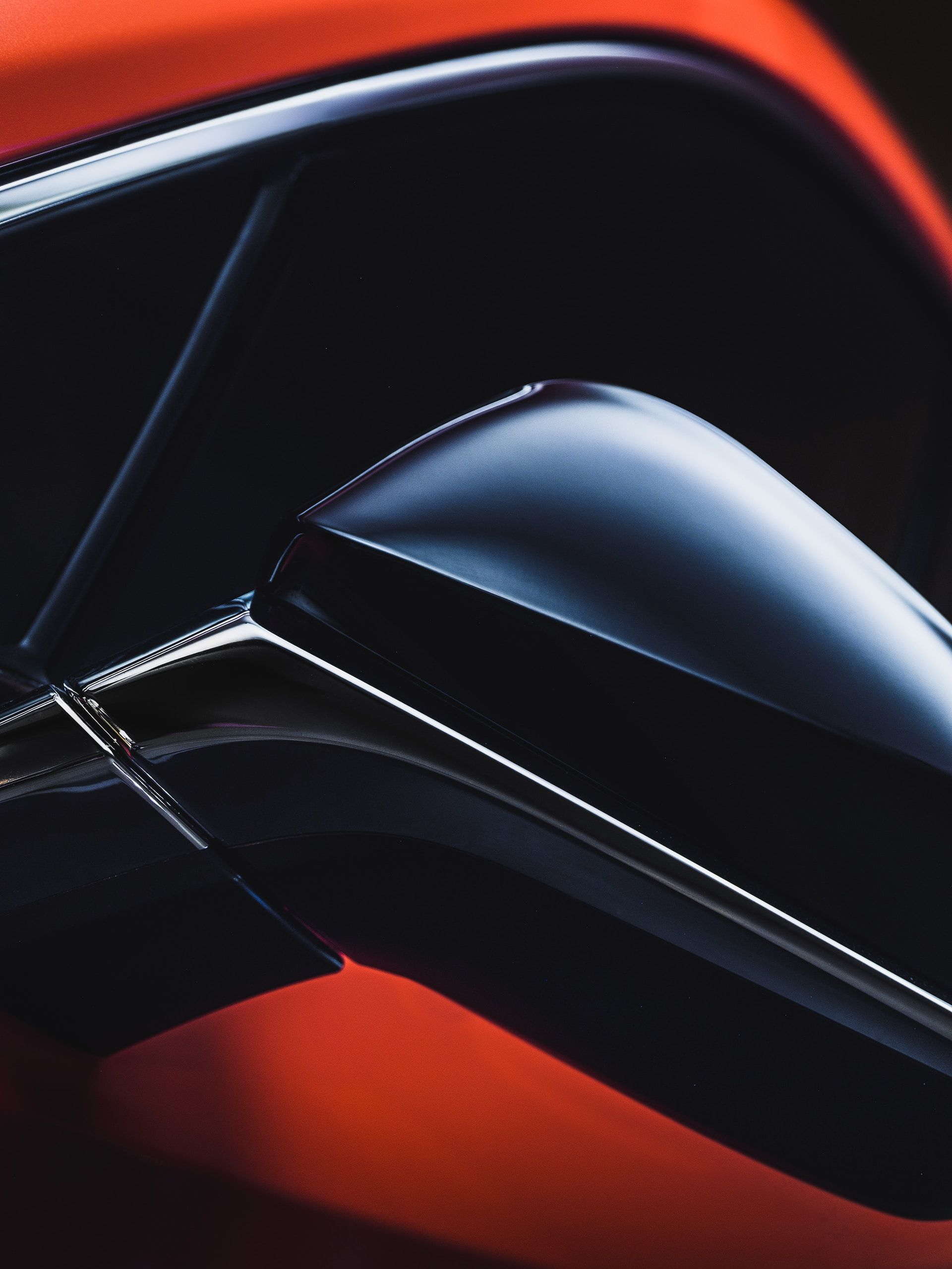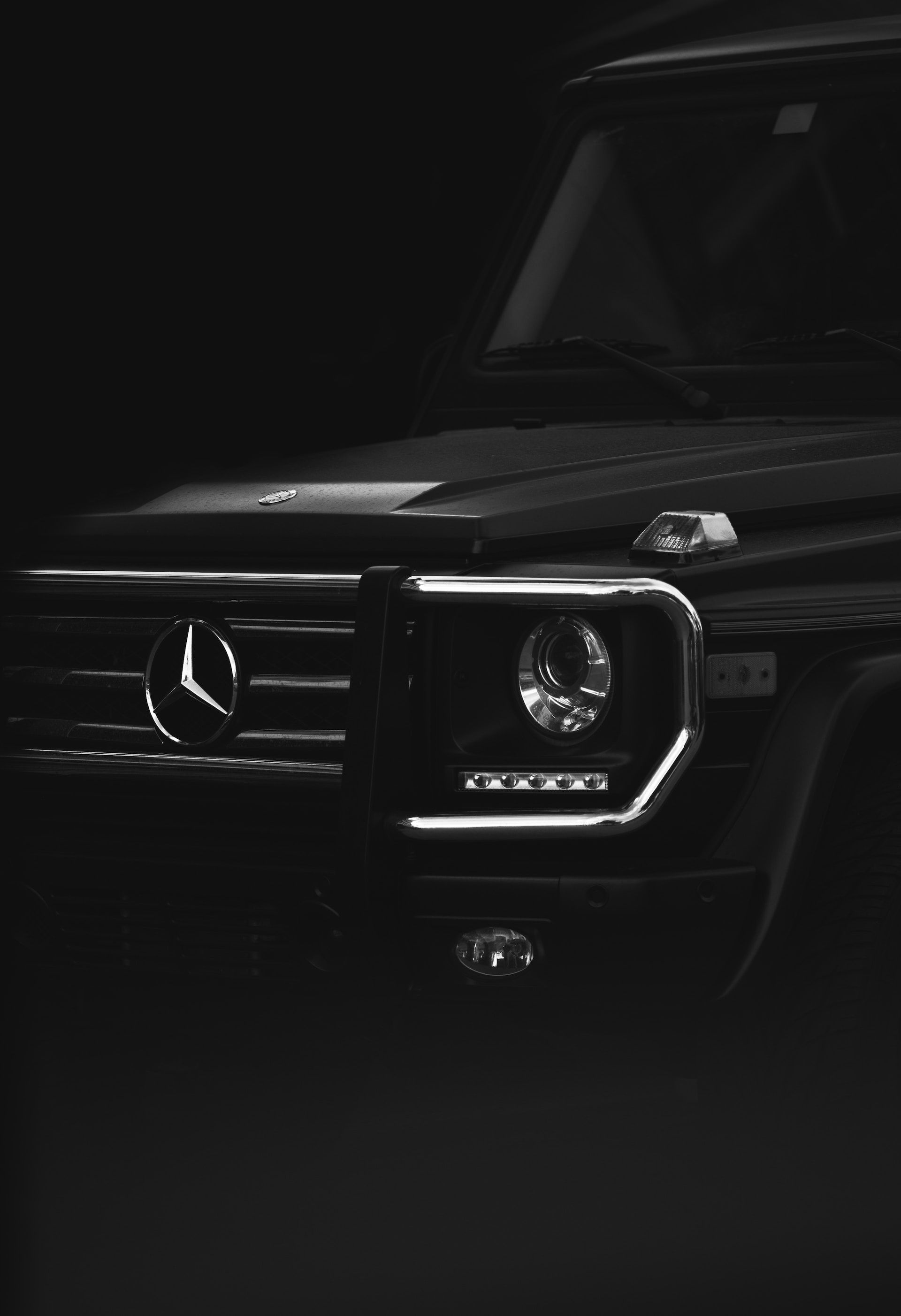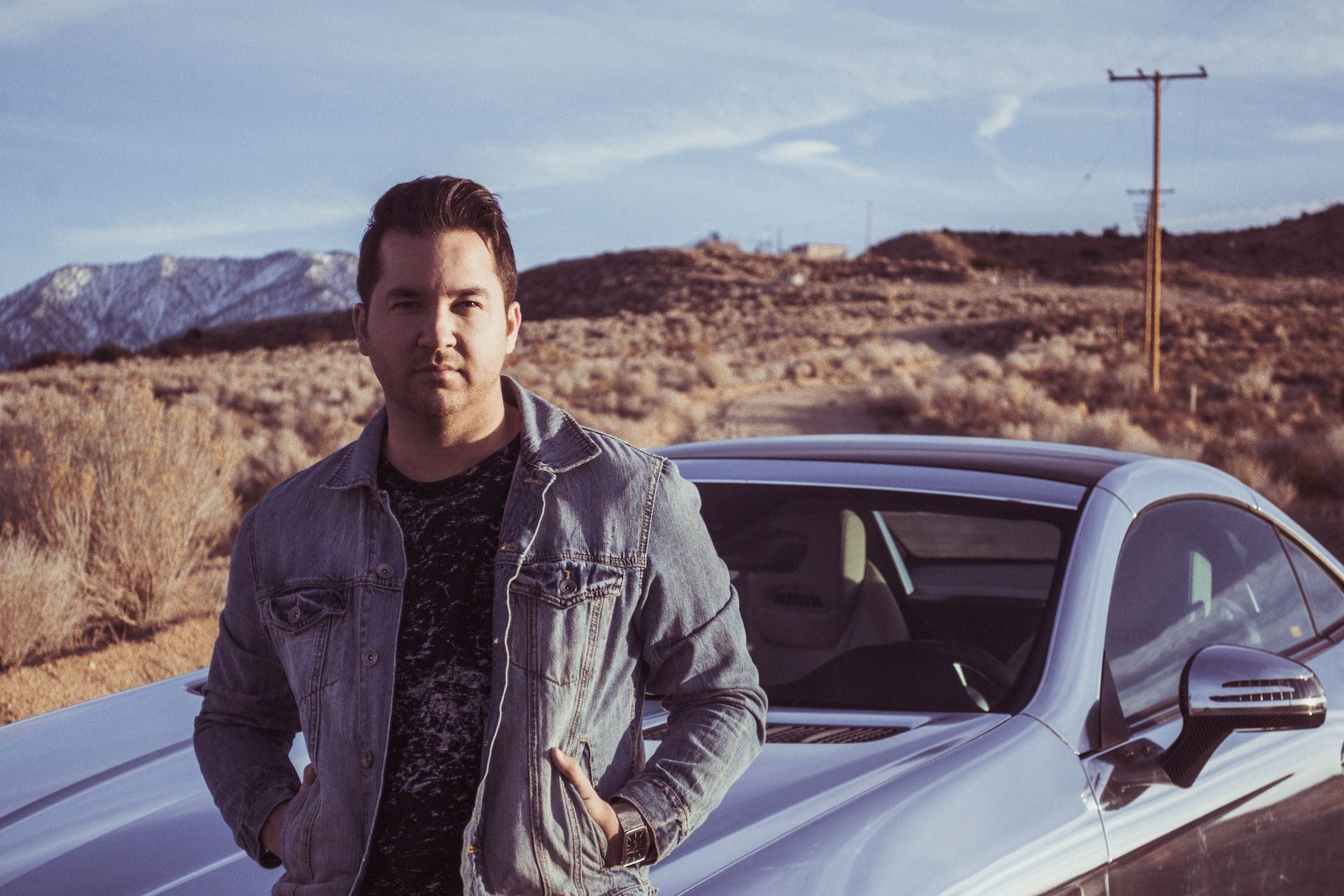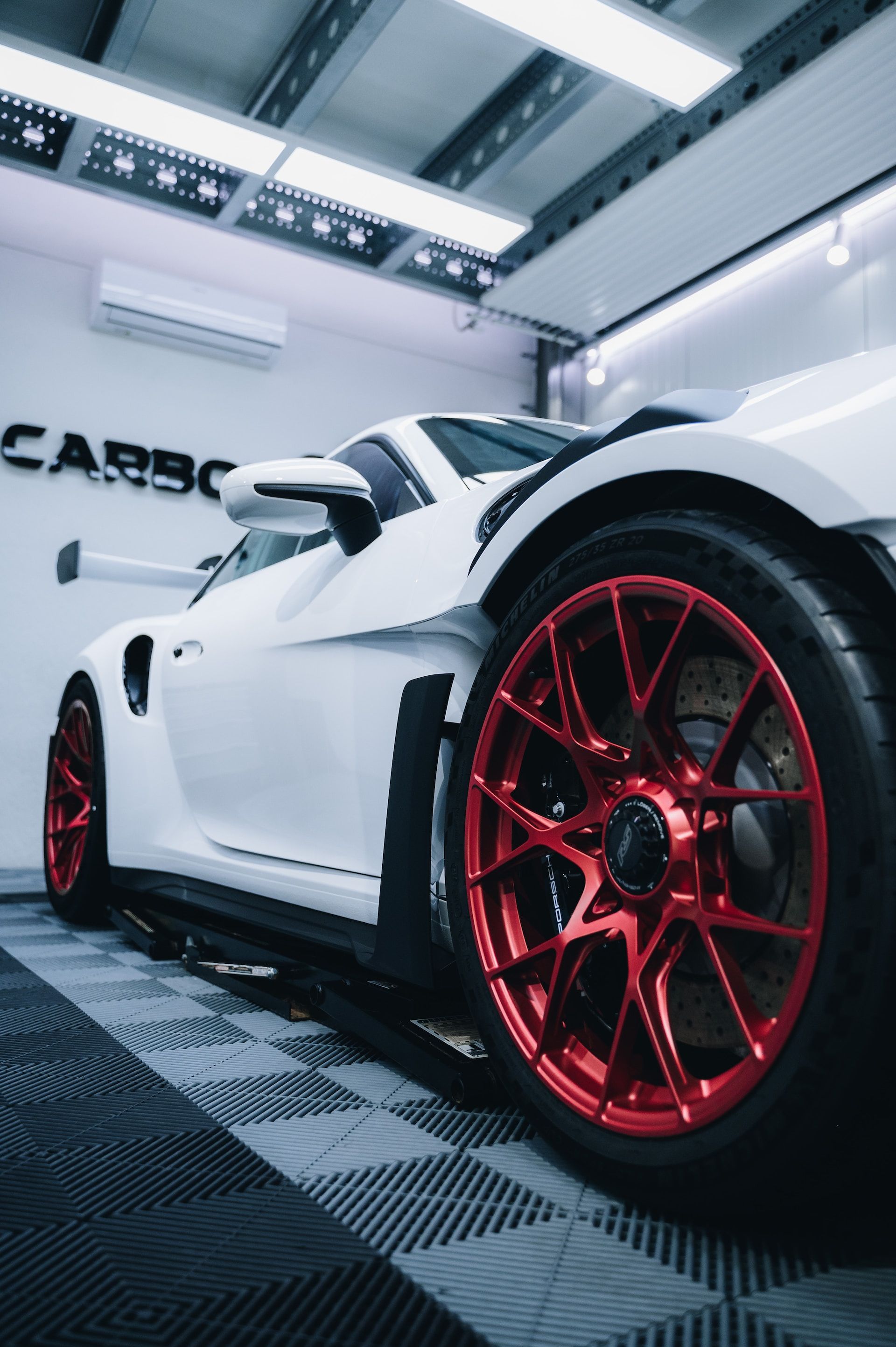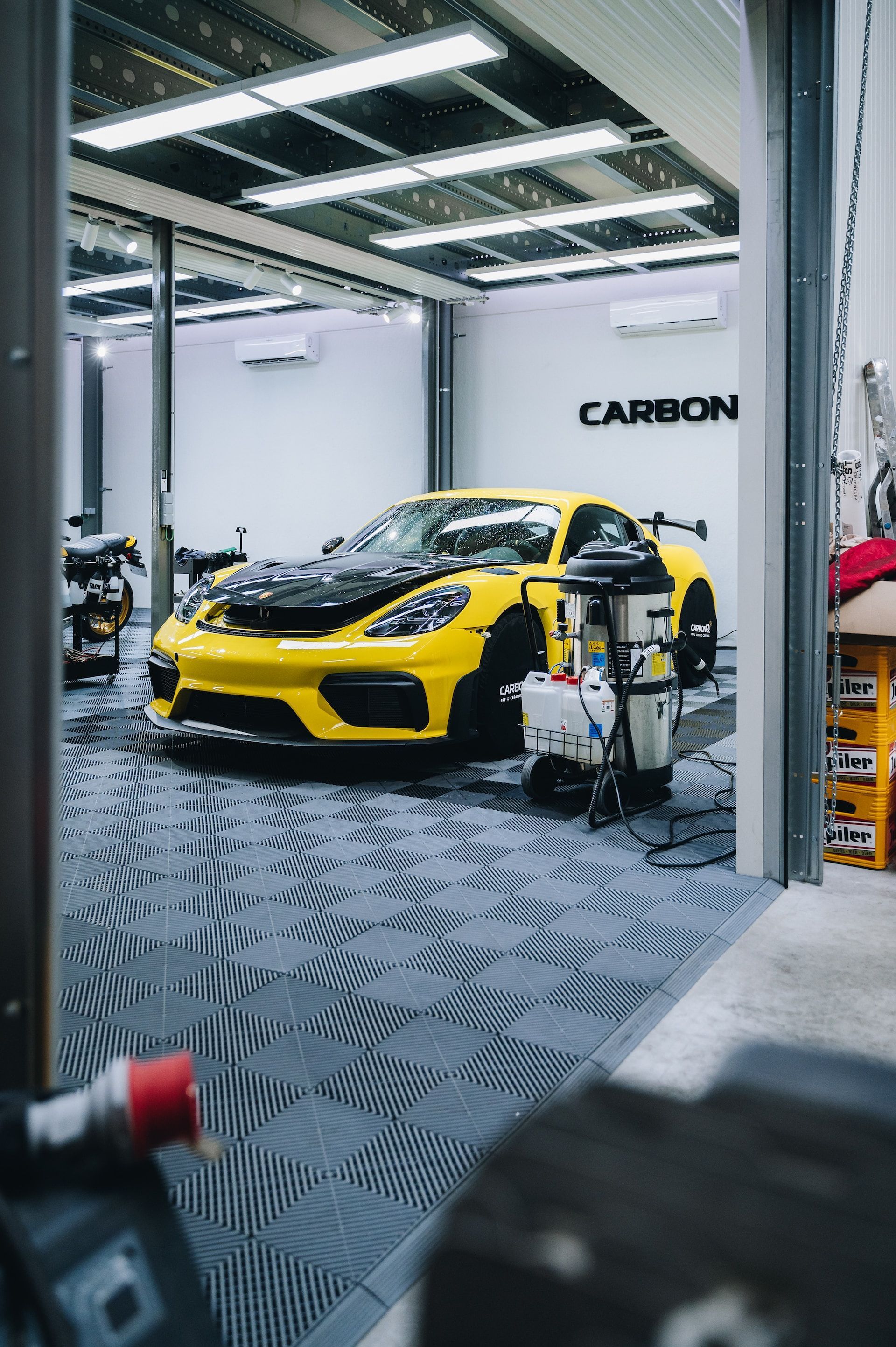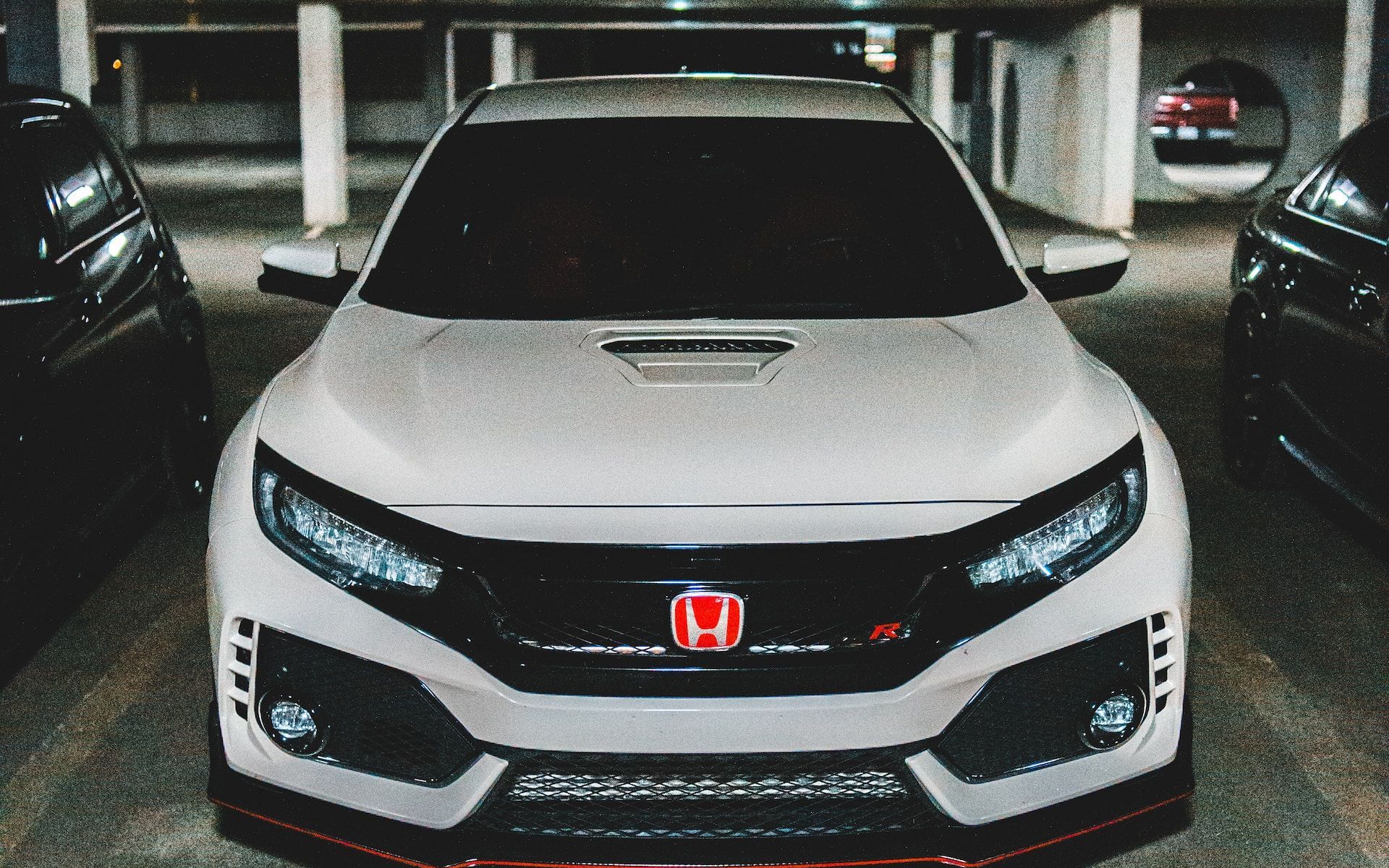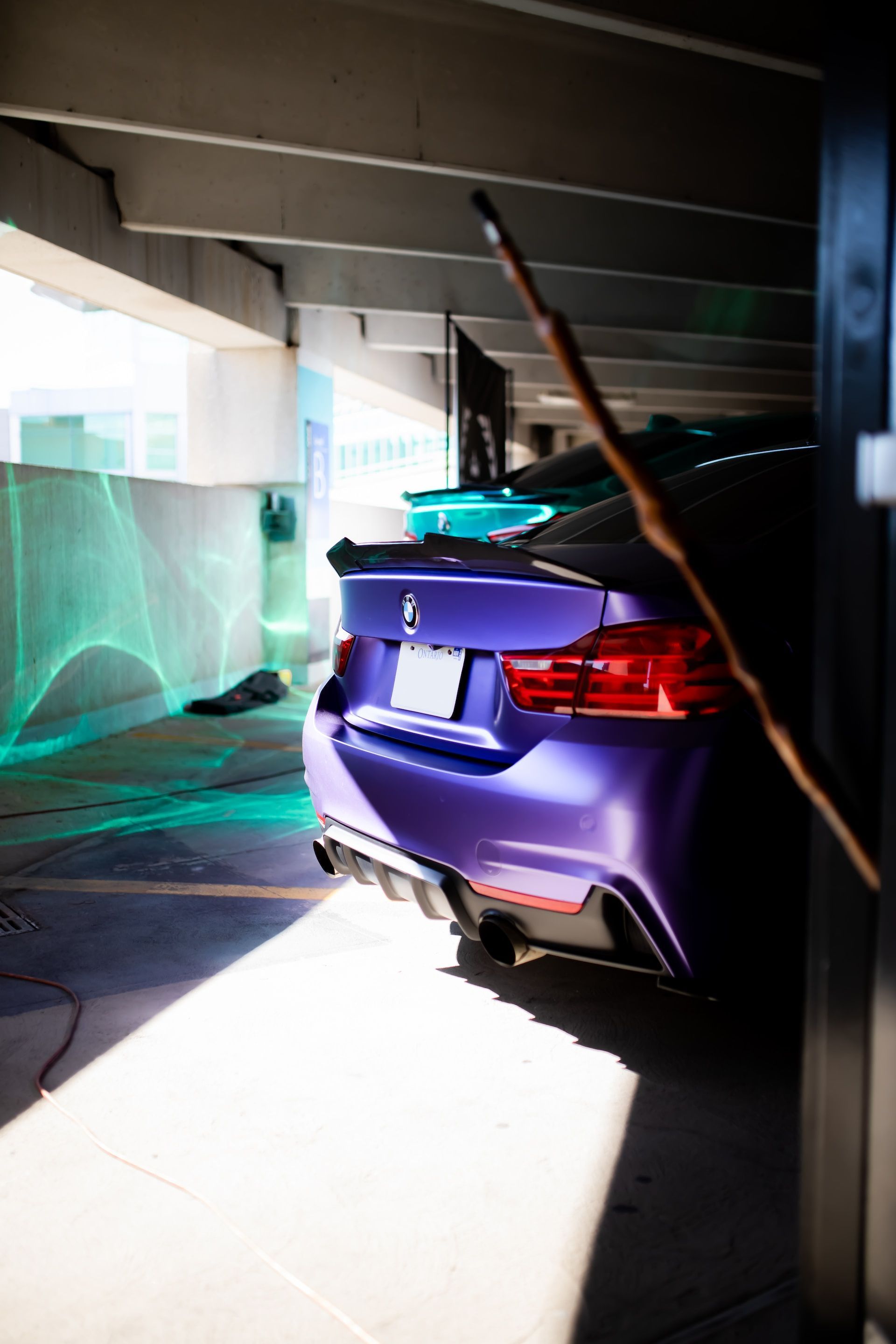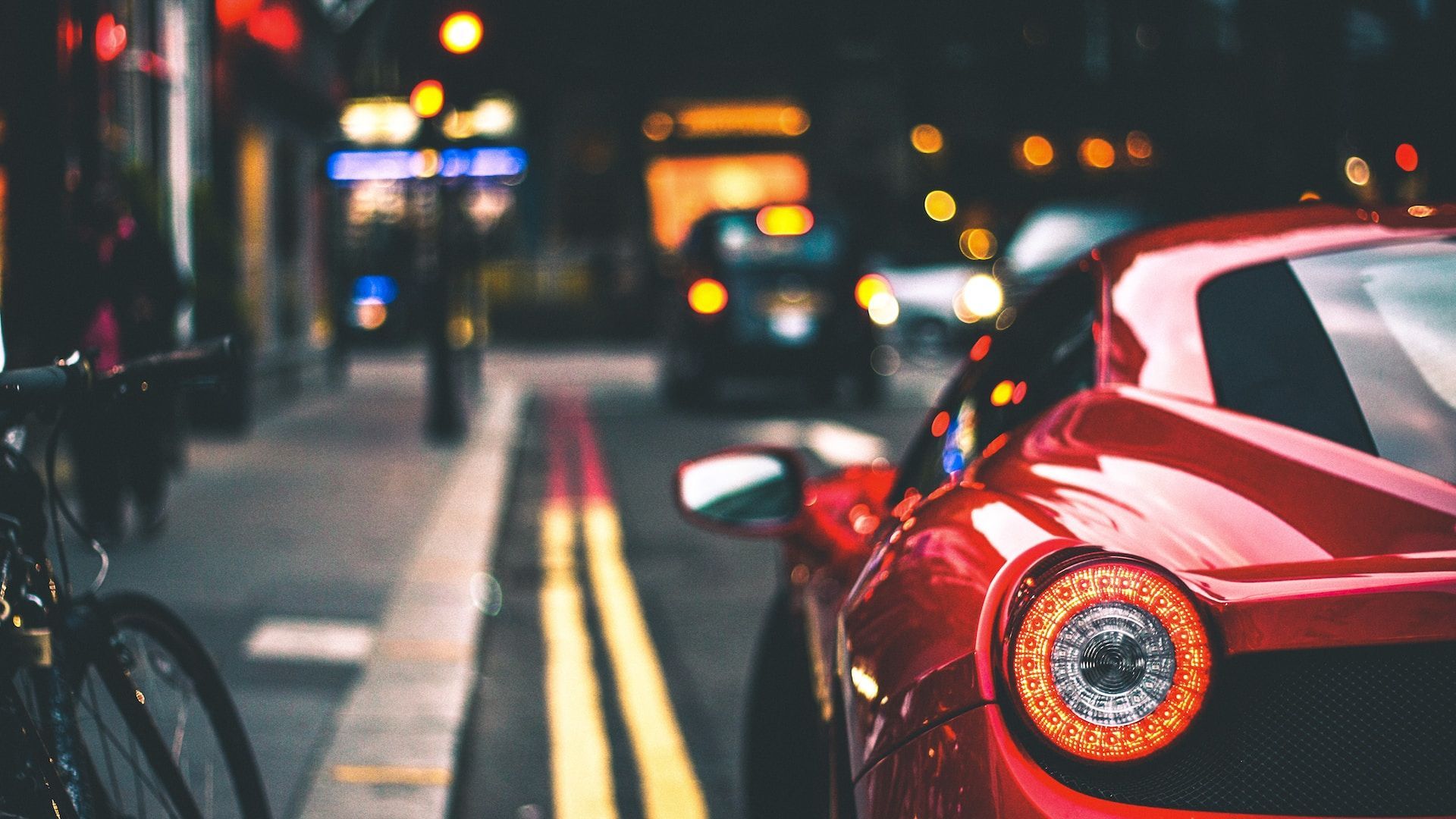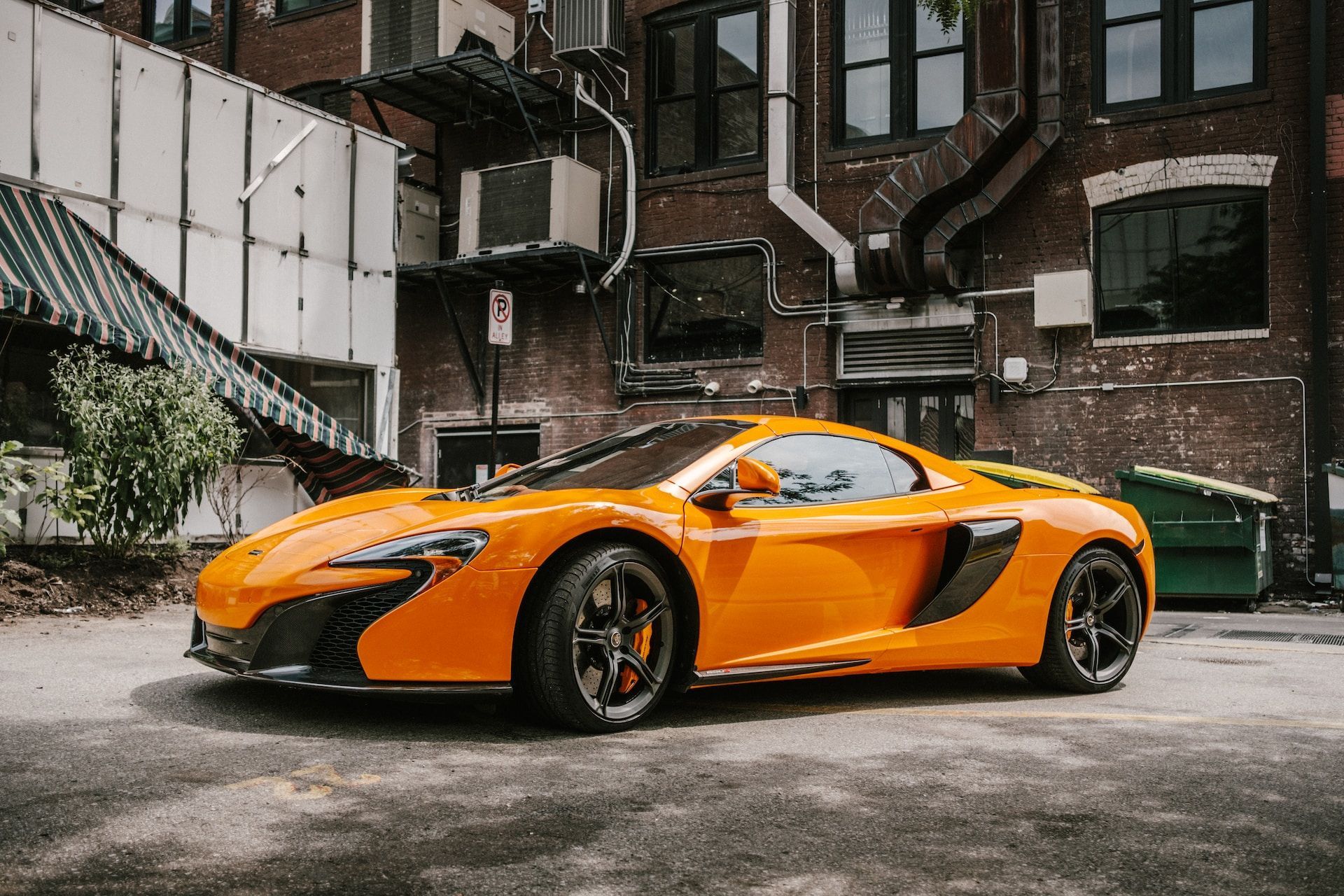Can You Wrap a Car with Bad Paint? The Ugly Truth About Car Wrapping
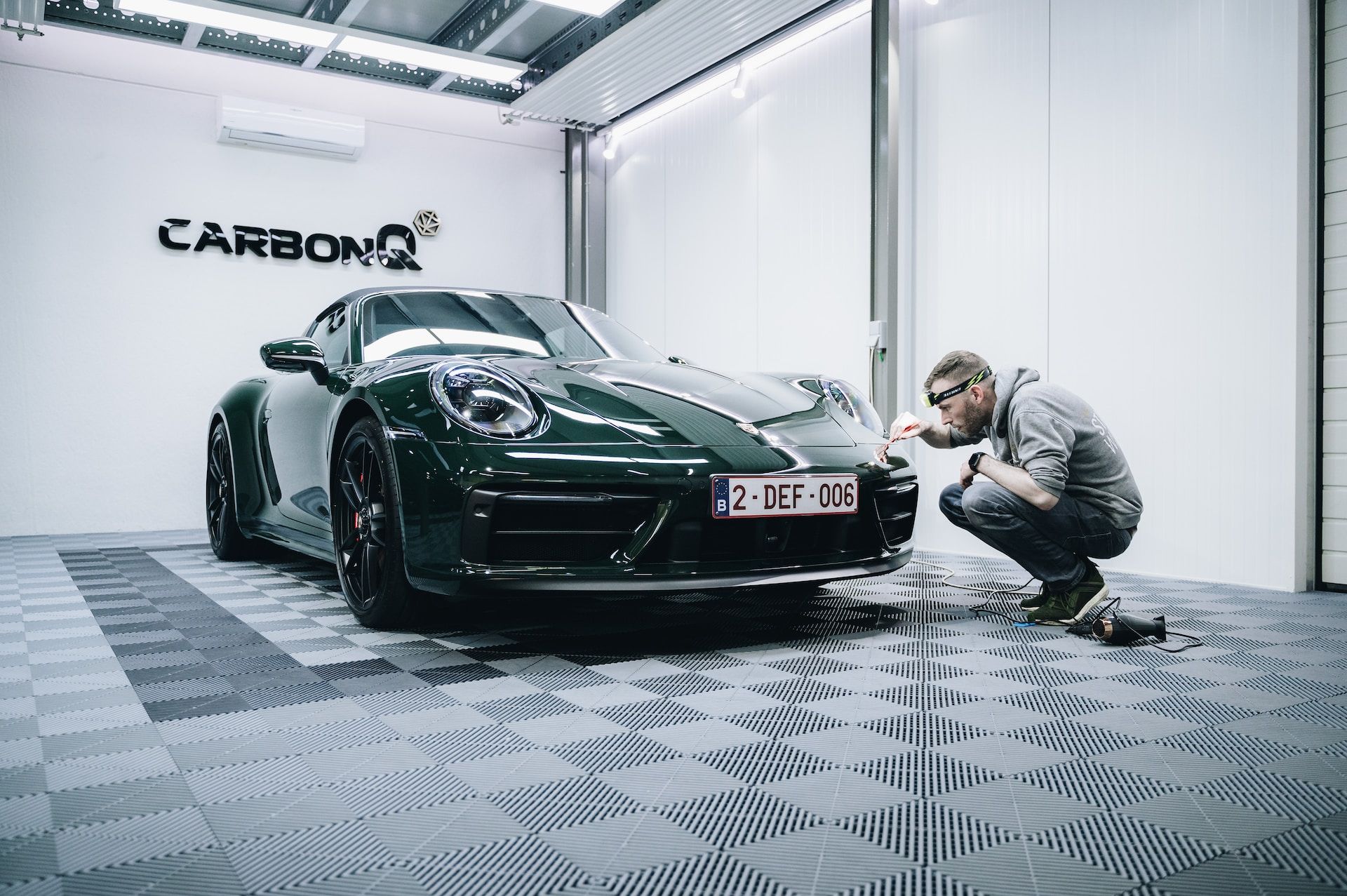
Introduction
Have you ever considered wrapping your car to give it a new look? Car wrapping has become increasingly popular, and for good reason.
It's a cost-effective option to completely transform the appearance of your vehicle and protect it from scratches, dents, and other damages. However, before plunging into this trendy world of car customization, let's take a closer look at what car wrapping truly entails.
Explanation of Car Wrapping
Car wrapping is the process of covering the entire exterior or specific parts of a vehicle with vinyl wrap material. This material can come in various colors, patterns, and finishes to achieve the desired look for your ride.
The installation process involves meticulously measuring and cutting the vinyl material to fit every curve and contour on your vehicle's surface. It's essential to note that car wrapping is not a permanent solution.
In fact, it typically lasts between three to seven years depending on several factors such as quality of materials used, weather conditions in your area, driving habits and more. Furthermore, keep in mind that once you remove the vinyl wrap from your vehicle's surface after years of use or damage tolerance threshold met; there might be some residual adhesive left behind that needs removal.
The Importance of Having Good Paint Before Wrapping a Car
The most crucial factor when considering car wrapping is having good paint before starting any installation process. Bad paint can ruin everything! If your vehicle already has chipped or peeling paint, rust spots or other imperfections on the surface then applying vinyl wraps over these will only accentuate these problems further rather than mask them.
You might be thinking - "But isn't the whole point of car wrapping is to cover up these blemishes?" While yes technically this is true, wrapping a car with bad paint is not only impractical but also a dangerous idea. The adhesive used in car wrapping can only stick to a smooth surface and cannot adhere properly to surfaces with compromised paint.
This means that the vinyl wrap will not stick properly and will eventually peel off or cause more damage to your vehicle's exterior. Before considering car wrapping as an option for your vehicle, it's crucial to ensure that your paint is in good condition.
If you're unsure about the quality of your paint or have noticeable damages on the surface, it might be wiser to consider repainting instead of opting for a temporary solution like vinyl wrapping. Remember, car wrapping should be used as an enhancement rather than hiding poor-quality paint jobs!
The Myth of Wrapping a Car with Bad Paint
Definition of Bad Paint
Before answering the question of whether you can wrap a car with bad paint, we must first define what we mean by "bad" paint. Bad paint is characterized by cracks, chips, fading, peeling and other forms of damage that significantly affect the appearance and integrity of the car's original coat. This could be caused by many factors such as lack of maintenance, exposure to extreme weather conditions or accidents.
Risks and Consequences of Wrapping a Car with Bad Paint
Wrapping a car with bad paint can have disastrous effects on your vehicle's appearance and structural integrity. The wrap can only conceal the damage for so long before it starts to peel off or show signs of wear and tear.
The adhesive used in wrapping the car can also contribute to further peeling or chipping away at the already damaged layer below it - increasing the risk for rusting, corrosion or further damage. Another risk is that wrapping bad paint can decrease your car's resale value due to its unsightly appearance; potential buyers may be turned off by the damaged look under the wrap - leading them to question how well you took care of your vehicle overall.
Factors to Consider Before Wrapping a Car with Bad Paint
There are several factors you must consider before deciding whether or not you should wrap your car with bad paint. First and foremost is how severe is the damage?
If there are only slight imperfections such as minor scratches or chips then it might be okay to proceed but if there are major dents or deep scratches then wrapping may not be advisable. You also need to consider how much money you want to spend on repairs; if fixing damages will cost more than a new paint job then perhaps painting would be more cost-effective in this case than wrapping.
You must determine whether the wrap will enhance or detract from the overall appearance of your vehicle. If the bad paint is only minimal and can be perfectly hidden under a new wrap job then go for it, but if it will still show through even with a wrap installed, then it may be best to invest in repainting it instead.
While wrapping a car with bad paint may seem like a quick fix for refreshing its appearance without going through the hassle of repainting, it is important to understand that there are risks and consequences involved. Before deciding what to do with your vehicle's damaged paint, take into consideration all the factors mentioned above and make an informed decision that would be most suitable for your needs.
The Process of Wrapping a Car with Bad Paint
Pre-Wrapping Preparation
Before you even consider wrapping a car with bad paint, it is essential to make preparations. The first step is to thoroughly clean the surface.
Use soap and water to remove any dirt, debris, grease, or oil residue on the car's exterior. After cleaning the surface, sanding is necessary.
Sanding helps create a rough texture that enables the primer layer to adhere better. It also helps remove any existing paint layers that may be flaking off.
Filling in cracks, dents, and scratches is another crucial step in prepping a vehicle for wrapping. By filling these areas in with body filler, it ensures you have a smooth surface to work on before applying the primer.
Applying Primer to the Surface
Priming is an essential step before wrapping your car with bad paint. The primer serves as an adhesive layer between your car's surface and the vinyl wrap material you intend to use.
The layer of primer applied must be thick enough and dry thoroughly before proceeding to wrap your vehicle carefully. Applying too little primer or using one that has not dried entirely can result in bubbling or lifting of the film material during application.
Wrapping Your Car
Choosing the right wrap material for your vehicle's condition should not be overlooked when working with poor quality paints. Go for high-quality vinyl wraps that offer UV protection and durability.
When installing vinyl wraps on cars with terrible paint jobs, special application techniques are necessary than those used on vehicles with good quality paints. Vinyl wraps' adhesive formula varies depending on factors such as temperature and humidity levels; hence careful handling is required during installation not damage further damage areas of bad paint jobs.
Avoiding Further Damage When Wrapping Your Car With Bad Paint
Wrapping a car with bad paint comes with several risks: it can worsen the car's appearance, mask underlying problems, and reduce its overall value. However, with careful consideration and skilled hands-on application techniques, you can minimize these risks. Before wrapping your vehicle with bad paint, ensure that all surface preparation steps are complete and thoroughly dry.
This ensures that the vinyl wrap adhesive layer sticks well on the primer layer without peeling off. When choosing vinyl wraps for your vehicle's condition, go for those explicitly designed to provide UV protection and are durable.
Avoid using wraps made of cheap materials that peel off easily or shrinks when exposed to heat or cold temperatures. Careful handling during installation is essential when wrapping cars with poor quality paints.
The technicians must avoid stretching too aggressively or using excessive heat during installation. When working around areas of bad paint jobs, use a heat gun carefully to prevent further damage to surrounding areas.
Maintaining Your Wrapped Car With Bad Paint
Wrapping your car will have you thinking about how you’ll maintain it afterward. To keep your wrapped car in good condition after installation regardless of whether the base paint is bad or not, follow the tips below:
Avoid harsh chemicals that can damage the wrap or underlying layer by cleaning your vehicle regularly using mild detergents and water. Wash gently by hand using non-abrasive fabrics such as microfiber cloths or sponges and avoid using automated car washes since they could damage the wrap material.
Exposure to direct sunlight could cause fading over time in some areas more than others; therefore avoid parking in direct sunlight for extended periods. always seek professional help if unsure about anything regarding maintenance procedures.
Maintaining Your Wrapped Car with Bad Paint
Tips on How to Take Care of Your Wrapped Vehicle After Installation
So, you've decided to wrap your car with bad paint, and now you're probably wondering how to maintain it. The good news is that taking care of a wrapped car isn't that difficult. The bad news is that if you don't take care of it properly, the wrap will deteriorate quickly.
Here are some tips on how to take care of your wrapped vehicle after installation. Firstly, avoid using harsh chemicals on your car's surface.
Chemicals like bleach and acetone can damage the wrap by breaking down the adhesive and fading the colors. It's important to use only soap and water or a specialized cleaner designed for wraps when cleaning your car.
Secondly, avoid parking in direct sunlight for long periods as this can cause the wrap to fade prematurely. Park in shaded areas whenever possible or invest in a good quality car cover.
Avoid using pressure washers when cleaning your wrapped vehicle. High-pressure water can damage the edges of the wrap causing it to lift or peel off entirely.
Avoiding Harsh Chemicals That Can Damage The Wrap Or Underlying Layer
It's important to note that not all cleaners are created equal when it comes to maintaining a wrapped vehicle with bad paint. Using harsh chemicals on your car's surface can not only damage the wrap but also harm the underlying layer of paint.
Chemicals like bleach, ammonia-based cleaners and degreasers should be avoided at all costs as they break down adhesives used to attach wraps and cause them to fail prematurely over time. Additionally, abrasive cleaning methods such as hard-bristle brushes or buffing tools should be avoided altogether when washing your wrapped vehicle as they can scratch or dull its surface.
Instead, consider investing in specialized cleaners designed for use on wraps. These products are formulated to be gentle and leave no residue, ensuring your car's surface remains in good condition.
Regular Cleaning And Maintenance Schedule
Another important aspect of maintaining a wrapped vehicle with bad paint is to establish a regular cleaning and maintenance schedule. It's recommended that you clean your wrap at least once a week using soap and water or a specialized cleaner. For heavier soil buildup like bird droppings or tree sap, it's best to clean the affected area promptly with a damp cloth or sponge to prevent any permanent damage.
Moreover, it's essential to establish a regular maintenance schedule that includes checking for any signs of wear and tear such as cracks, bubbles, or peeling. If you notice these signs, take action immediately by contacting your wrap provider for repairs before the problem gets worse.
Maintaining a wrapped vehicle with bad paint requires careful attention to detail and proper care. By following these tips on how to take care of your wrapped vehicle after installation, avoiding harsh chemicals that can damage the wrap or underlying layer as well as establishing a regular cleaning and maintenance schedule you can ensure your car remains in pristine condition for years to come.
Conclusion
After discussing the risks and consequences of wrapping a car with bad paint, it is clear that having good quality paint before wrapping your vehicle is of utmost importance. It is not worth taking the risk of damaging your car further by attempting to wrap it with bad paint.
If you are unsure about the condition of your vehicle's paint, it is always better to seek professional help rather than trying to DIY. A professional can assess the state of your paint and advise you on whether or not it is safe to wrap.
Wrapping a car can be an excellent way to change its appearance and protect its original finish, but only if done correctly. Remember that a vinyl wrap will only look as good as the surface underneath it, so don't cut corners when it comes to prepping your car for installation.
Good Paint Matters
Your car's paint job represents a significant investment, and protecting it should be a top priority. Even if you plan on wrapping your vehicle in the future, maintaining good quality paint will ensure that you get the most out of both worlds: superior aesthetics and protection.
A high-quality coat of paint will also increase the resale value of your car. If you take pride in owning an automobile and want to maintain its value over time, investing in regular maintenance to keep its appearance pristine can go a long way.
Seek Professional Help
If you're unsure about whether or not your car's paint is suitable for wrapping or have any doubts about doing it yourself - seek professional help! A skilled technician knows what they are doing when inspecting automotive finishes for adhesion problems or other defects that could impact wrap performance.
They'll also make sure everything goes smoothly during installation so that there isn't any damage done to your vehicle's appearance. Plus, they have access to high-quality materials and equipment that will help ensure a long-lasting, beautiful finish.
So, don't be afraid to ask for help. It may cost a little more upfront, but it's worth it in the long run when you consider the potential damage you could do without the right expertise on your side.
Final Thoughts
If you're thinking about wrapping your car, make sure that your paint is in good condition before doing so. Wrapping a car with bad paint can lead to disastrous results and further damage to your vehicle.
If you're uncertain about whether or not your paint is up to par, don't be afraid to seek professional advice. Remember that maintaining good quality paint is essential if you want an automobile that holds its value over time-and investing in regular maintenance can go a long way toward achieving this goal.
Take care of your vehicle's original finish! Not only will it look great now, but it'll also be easier to sell later on down the road.
So go ahead – wrap away! Just make sure you've done everything possible beforehand to protect your investment.
Scottsdale Auto Detailing Blog
A Mobile Car Detailer in Scottsdale
drop us a line for a personalized car detailing plan
Services
We provide detailing in:
Scottsdale, Paradise Valley, Phoenix, Tempe, Mesa, Chandler, Glendale & Gilbert
All Rights Reserved | Privacy Policy | Conditions of Use
